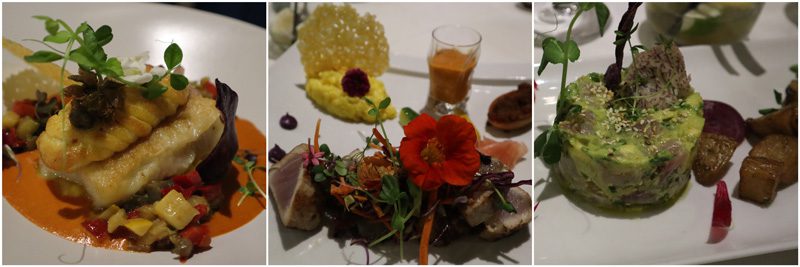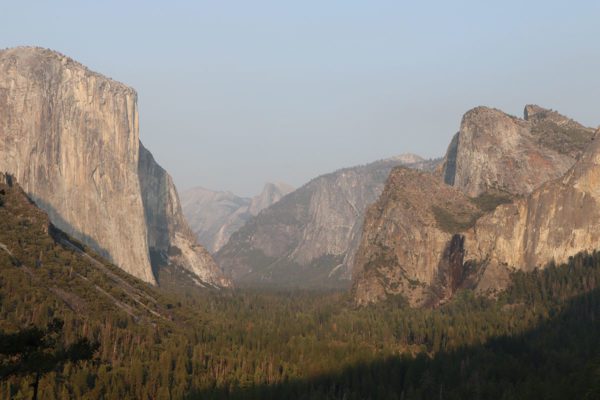2 Weeks in Reunion Island Itinerary
Part 1: Four Days on the West Coast
The first part of our Reunion Island is dedicated to its riviera along the sunny and dry west coast. We’ll base ourselves in the finest lagoon-side village and use this gem as our base for exploring the coastline and for venturing to mountains on memorable scenic drives and road trips.
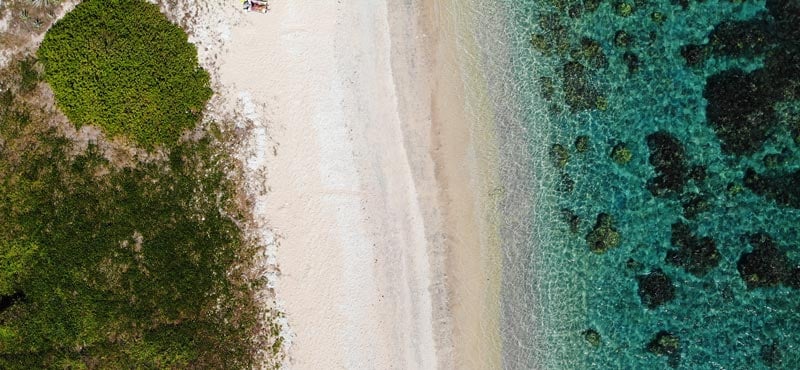
Reunion Island’s West Coast
The west coast of Reunion Island, particularly the stretch from St-Paul to St-Leu, is an affluent part of the island and its tourist capital. If you’ve been to the Big Island of Hawaii, this part of Reunion Island is like the Kona Coast – sunnier, drier, and more developed for tourism with plenty of pockets of charm. The Route des Tamarins makes it easy to get up and down the coast; you can spend a good few days here, mixing fun in the sun with hiking and driving in the mountains. This part of the island also offers plenty of adventure thrills, including scuba diving, whale watching, paragliding, and scenic helicopter tours.
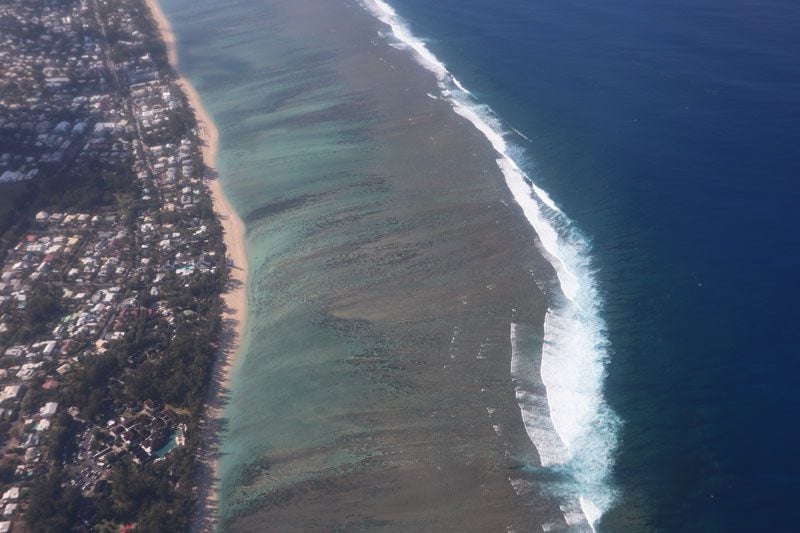
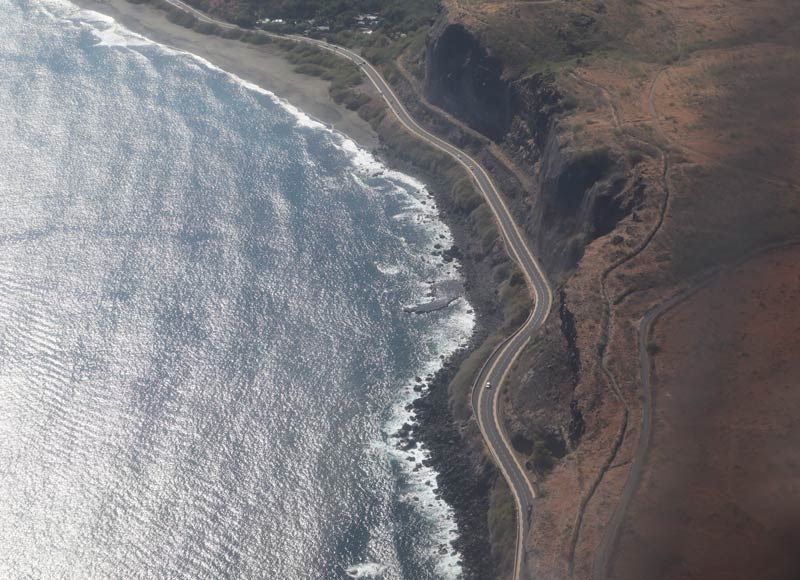
We circled the island in a counterclockwise direction with many multi-day inland detours. This way, the first part of the trip was more relaxed as we gradually ventured into the mostly nature-based sections of the itinerary. You can, of course, do the opposite and wrap things up with a few days along the lagoon.
Where to Stay on Reunion Island’s West Coast
After much thought and research, we based ourselves in La Villa de la Plage in the charming lagoon-side village of la Salines-les-Bains, about a 45-minute drive from the airport. This exceptional bed and breakfast has only four units nestled around a lush tropical garden and a swimming pool, with plenty of drinking and dining options nearby.
The bed and breakfast is on the beach, with a small metal gate leading from the backyard to the white sand. The beach is marked on the map as Plage de la Saline, and we found it to be one of the best beaches in Reunion Island. It stays quiet and sunny throughout the day, and the snorkeling here is not bad. As far as beaches go, they’re as South Pacific as they get in Reunion (more on that later). You can use free kayaks and SUPs to work up an appetite, and the location is perfect for stargazing.
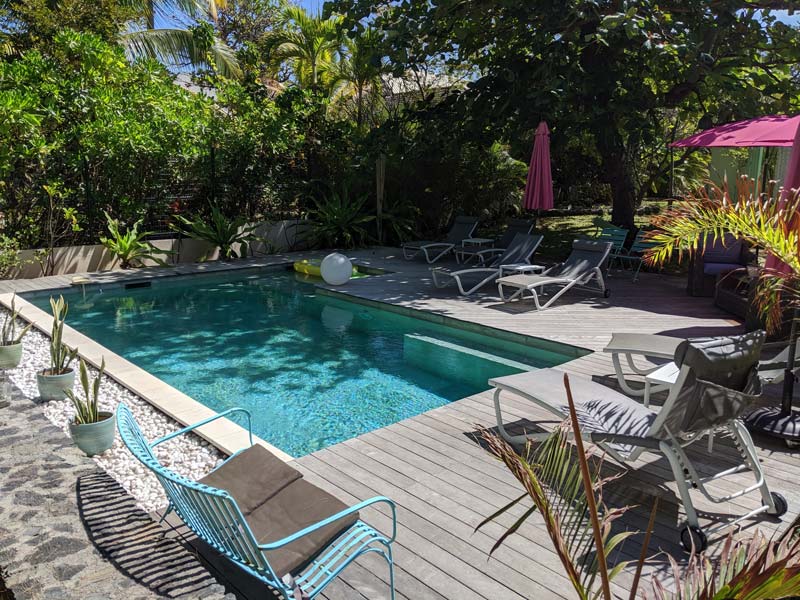
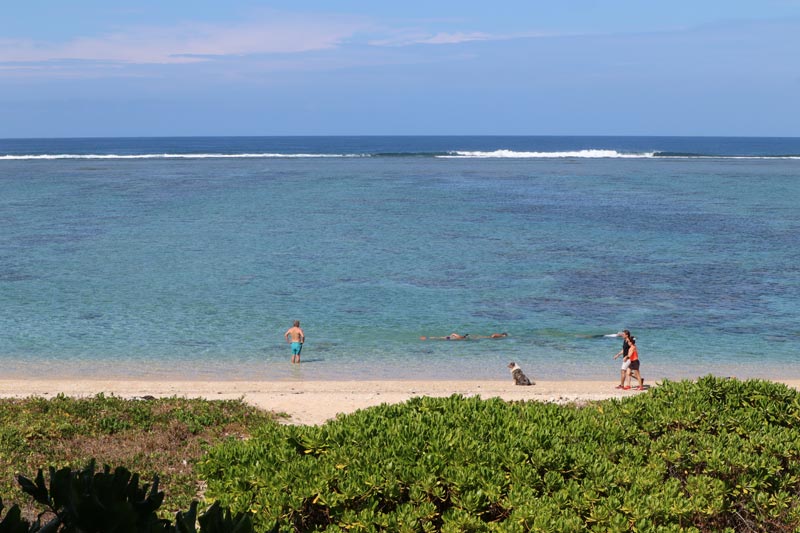
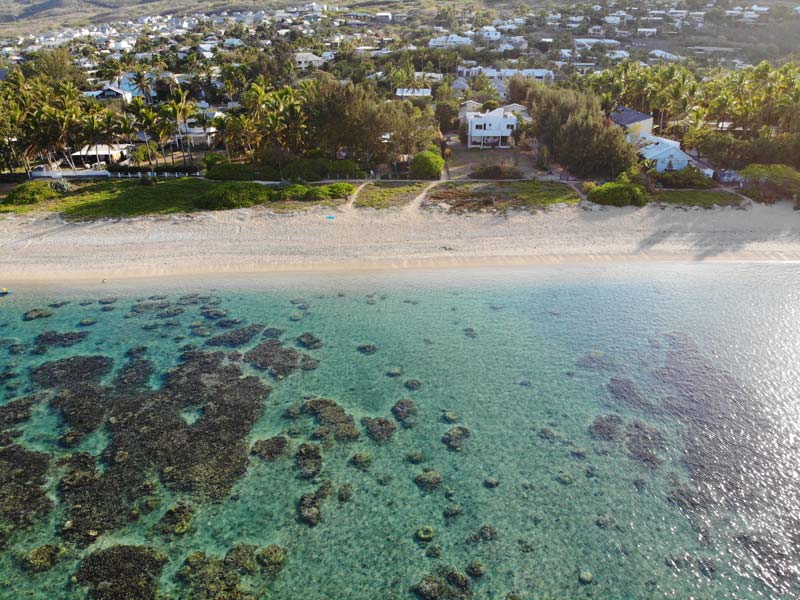
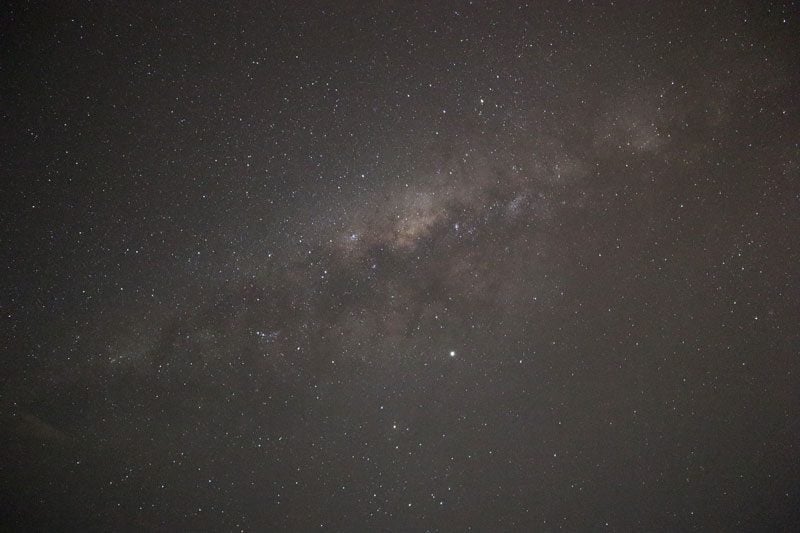
Now, back to the bed and breakfast. The property is super well-kept, and all units are fitted for the best comfort. We especially loved the outdoor (hot) showers and the terrace overlooking the garden. Breakfast is very pampering, and you’ll take turns enjoying it in the tree house overlooking the beach, which also doubles as the perfect spot to watch the sunset. If you have an early excursion, your hosts will prepare a breakfast basket.
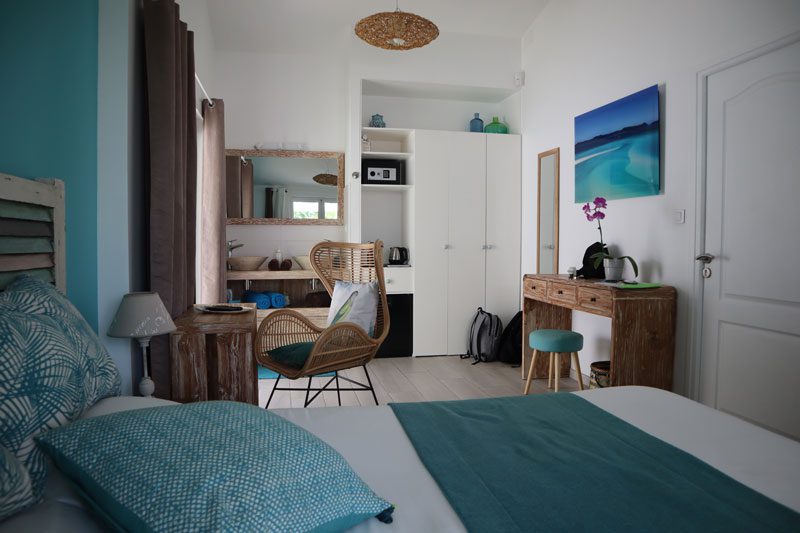
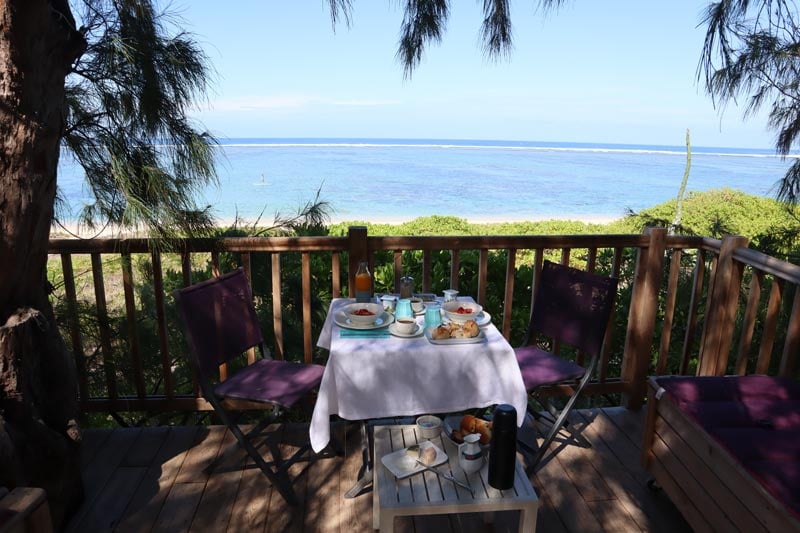
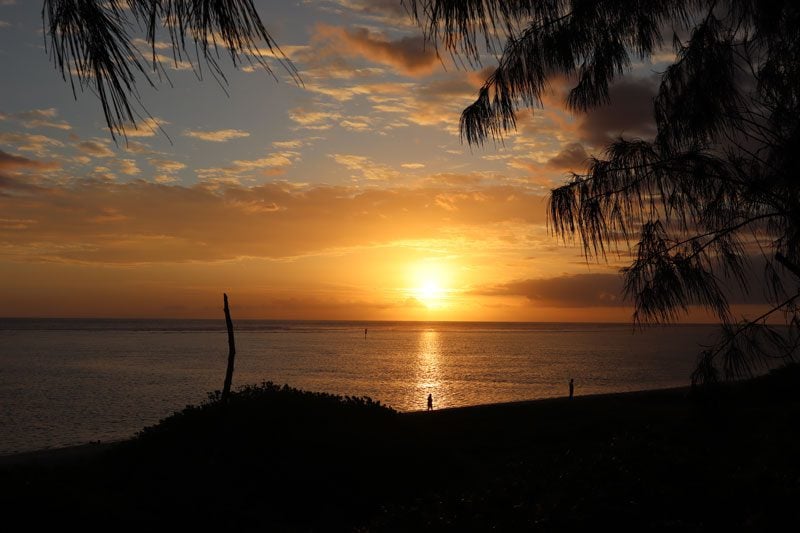
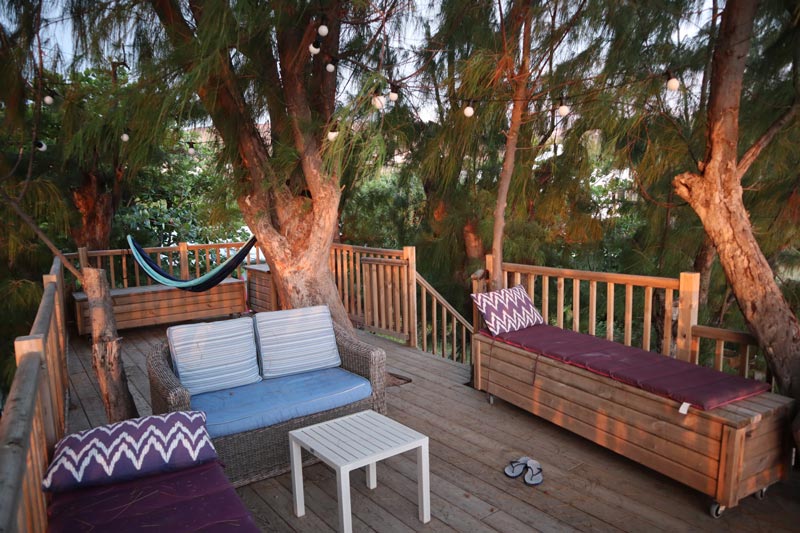
(1) If La Villa de la Plage is fully booked, also check Senteur Vanille and Villa Prana. (2) Here’s a list of all accommodations in the St-Paul area that you can book online.
Day 1: Arrival and Exploring St-Paul
If you’re coming to Reunion Island from France, you won’t even get your passport stamped. As you leave the terminal, it’s clear you’ve arrived at a tiny paradise. That warm air and the sight of emerald peaks broken only by deep ravines is reminiscent of my arrival to Tahiti for the first time, another faraway paradise and a greater part of the French Republic. The first task is to pick up your rental car, and then it’s off to either check in or merely drop your bags and head out for some sightseeing, as we did.
Optional Sightseeing in St-Denis
Most tourists overlook the capital city and head further down the coast (like we did), but if you have a few spare hours, St-Denis has a few highlights to offer, especially for history buffs and foodies.
On the architecture side, check out the Maison Kichenin (the oldest Creole mansion in St-Denis), the Conseil General de la Reunion (an elegant Creole villa), the Hotel de Ville (the most impressive building in the city). For fresh air, head to Le Barachois (the seafront park dotted with old cannons) and the Jardin de l’Etat (a mid-18th-century garden constructed to adapt imported plants to the island’s climate). For souvenirs, head to the Grand Marche, and for food, check out Le Caudan, Camions Bars du Barachois (food trucks), Le 144, and Le Reflet des Iles (Creole food).
Drive to St-Paul
The drive from St-Denis to St-Paul takes you on part of the famous Route des Tamarins, an engineering marvel spanning 34km of a seemingly impenetrable coastline. On the leg leading from the capital to Le Port, you can see the new viaduct in advanced stages of completion, a state-of-the-art mega-construction project designed to alleviate commercial traffic and mitigate natural risks of rockslides and flooding.
Exploring St-Paul
The main reason to visit St-Paul is its colorful outdoor market, which takes center stage on Friday and Saturday mornings, so it’s best to plan around that constraint. We landed from Paris on Saturday morning and made it for the market’s closing hour. The sights, colors, and scents are all you would expect from a market on a tropical island in Africa, but the added bonus here is the seaside location.
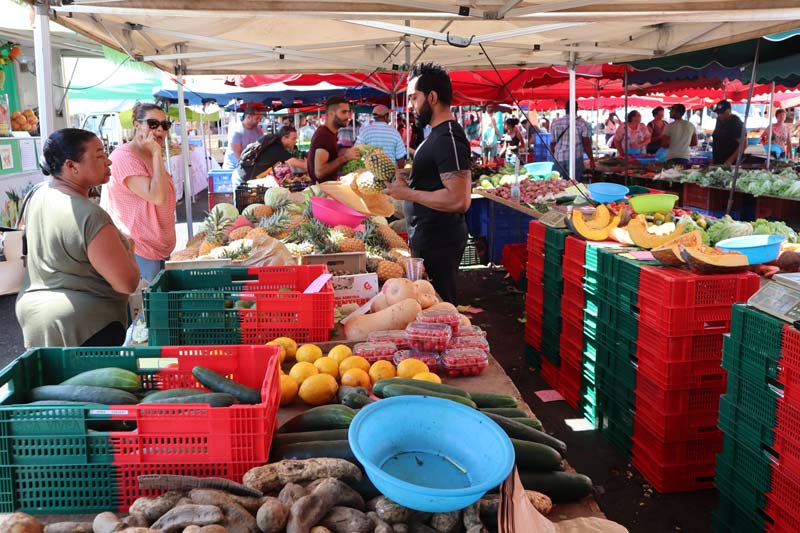
If you can get an early start to the day, visit the market and stock up on supplies for a picnic lunch somewhere on the coast or in the mountains. But even if you just come here for the sightseeing, you’ll be amazed at the richness of local produce, including vanilla, and the colorful local fashion on sale. Just pick up an ice-cold coconut and begin your market tour.
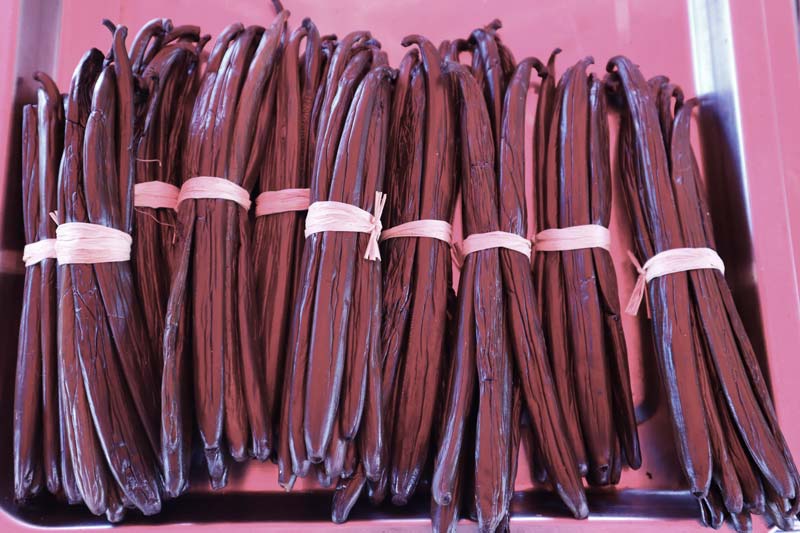
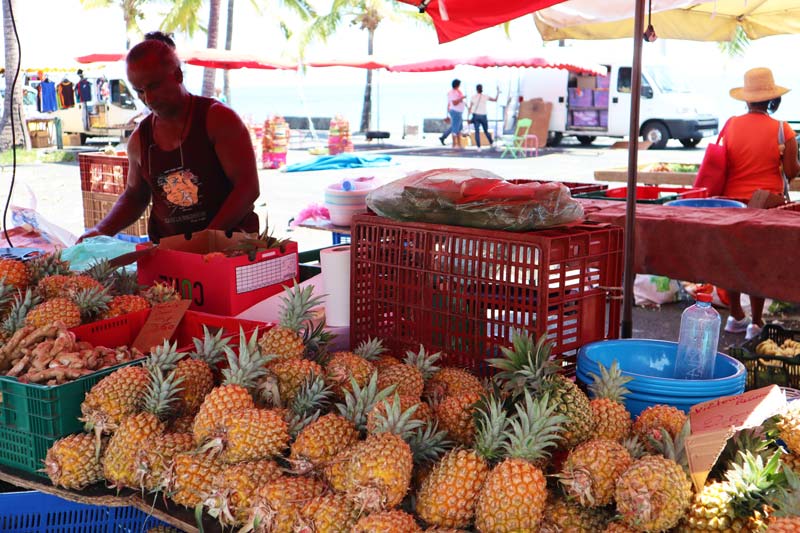
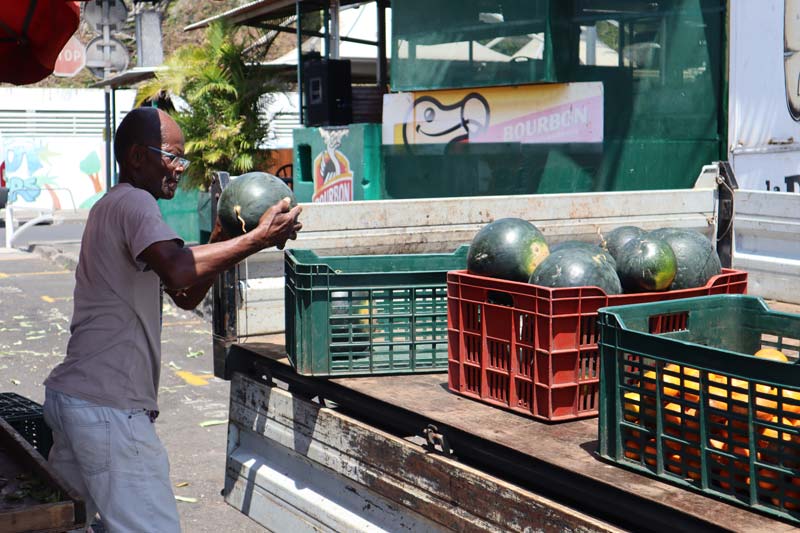
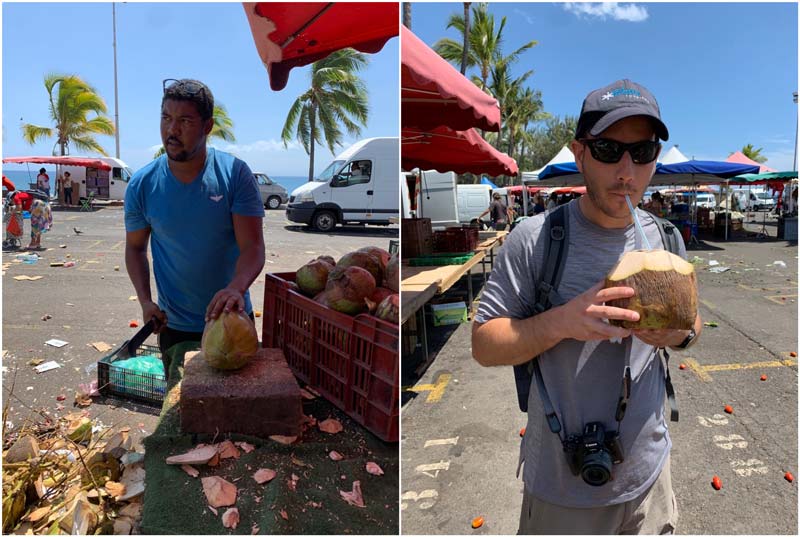
Aim to start your visit of the St-Paul market by 9 am, when the market is at its best. Things wrap up by 1 pm. You can use the free street parking (at least on Saturday) or the designated parking lots around.
For local eats around the market, choose from several takeaway stalls or simple local eateries. For a proper lunch, walk to the popular seaside restaurant La Capitainerie and try the tuna tartare and the grilled fish. Across the street is another solid option, Le Débarcadère, specializing in Lyonnaise and Creole cuisines, and down by the cemetery is another recommended seaside option, Restaurant Le Grand Baie.
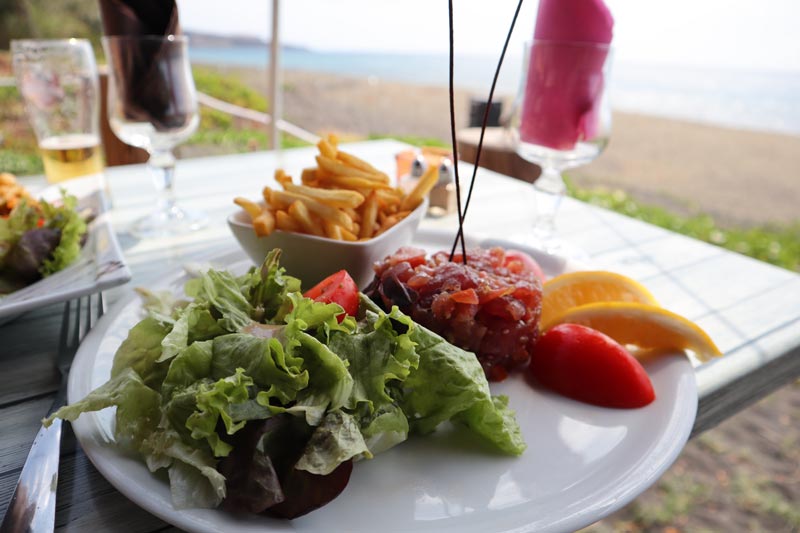
Save your dessert for La Magie des Glaces, hands down the best ice cream in Reunion Island. They specialize in flavors made from local ingredients, and the blends, such as honey and ginger, mango and chili peppers, and our favorite, passion fruit and geranium, are deliciously original.
Apart from the market, a seaside lunch, and buying a local SIM card, St-Paul has no “must-see” highlights. If you have the time, check out the Cimetiere Marin – the Reunionaise version of the Pere Lachaise Cemetery in Paris and the Siva Soupramanien Hindu temple.
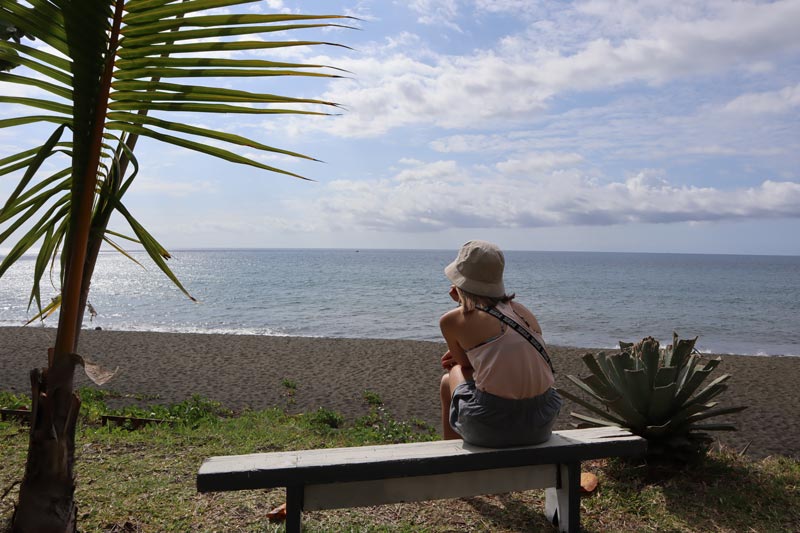
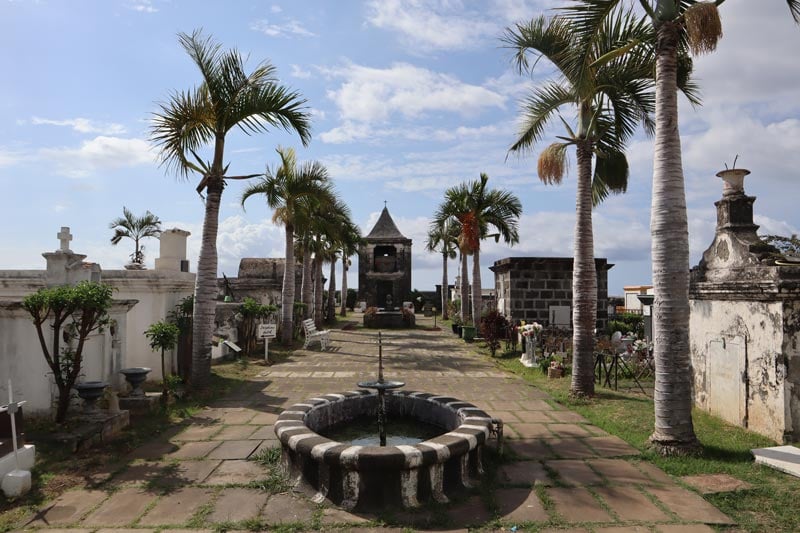
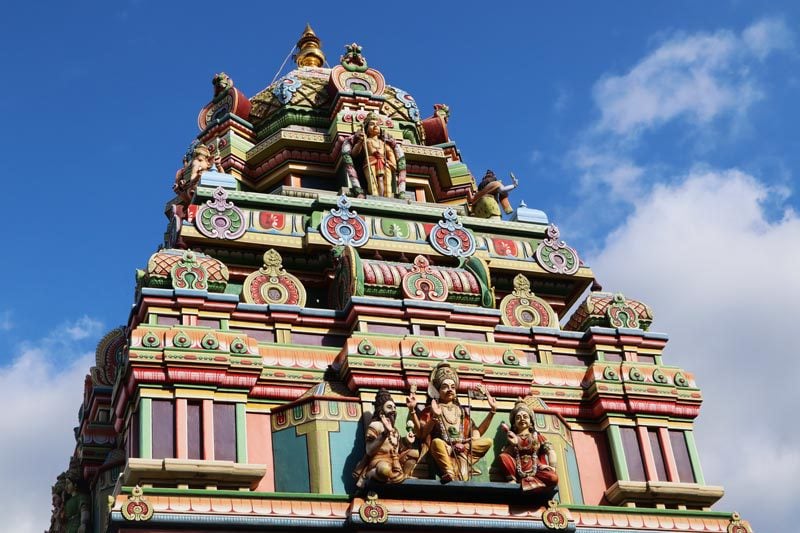
Cocktails at Copacabana
Still full from lunch, we headed for after-sunset cocktails at Copacabana. It’s about a 15-minute walk from La Villa de la Plage, right on the beach, feet in the sand, and complete with soothing sounds of waves crashing on the coral reef in the distance.
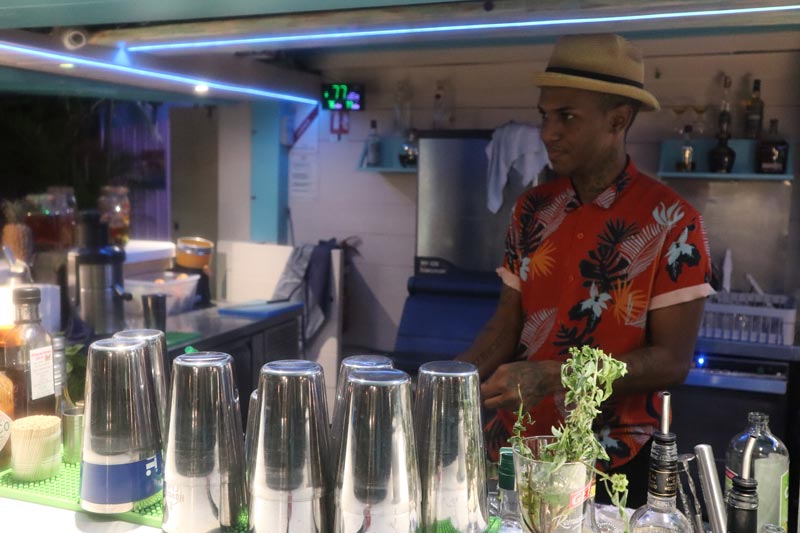
Day 2: Scenic Flight, Cap Noir & Beach Time
The second day in our Reunion Island itinerary is action-packed. We begin with a grand tour of the island, continue with a short yet breathtaking hike, and end with some relaxing time on the best beach on the island.
Scenic Helicopter Flight
It’s certainly not cheap, but if there’s a place in the world where you need to seriously consider splashing out on a scenic flight, Reunion Island is definitely such a place, right up there with Hawaii. Helilagon and Corail Helicopters are the leading suppliers, both offering similar packages and take-off locations.
Book your scenic flight through this online booking system to choose and compare between suppliers.
We planned this activity for our very first full day on the island to leave a few more chances on later days in case of bad weather (in fact, you’ll already list alternative dates at the time of booking). The comprehensive scenic flight, especially at the beginning of your trip, is a great way to see what’s in store in the coming days and get a unique vantage point from the air to some of the places you’ll explore on foot or by car.
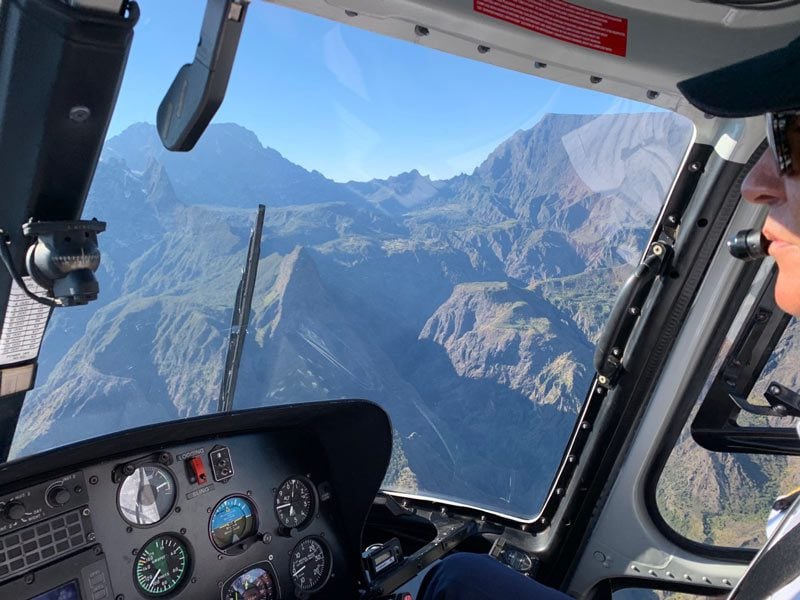
The scenic flight itself is simply out of this world. This island is so rugged and diverse, with the colors and landscape changing every few minutes. The most memorable highlights were flying in and out of the cirques, between the summits of the Piton des Neiges and Grand Benare, over the moon-like landscape of the active volcano, and getting as close as possible to the Trou de Fer – the highest waterfall on the island. We were picked up from our bed and breakfast at 7:20 am and returned by 9:30 am for breakfast in the treehouse.
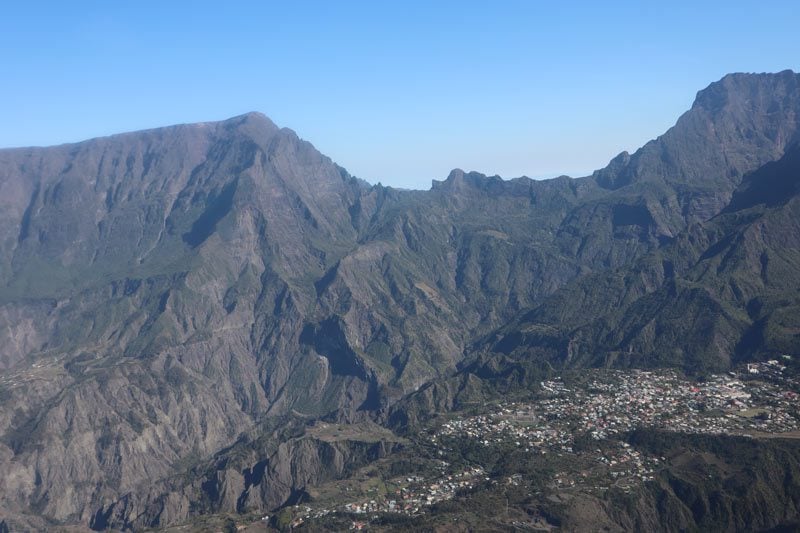
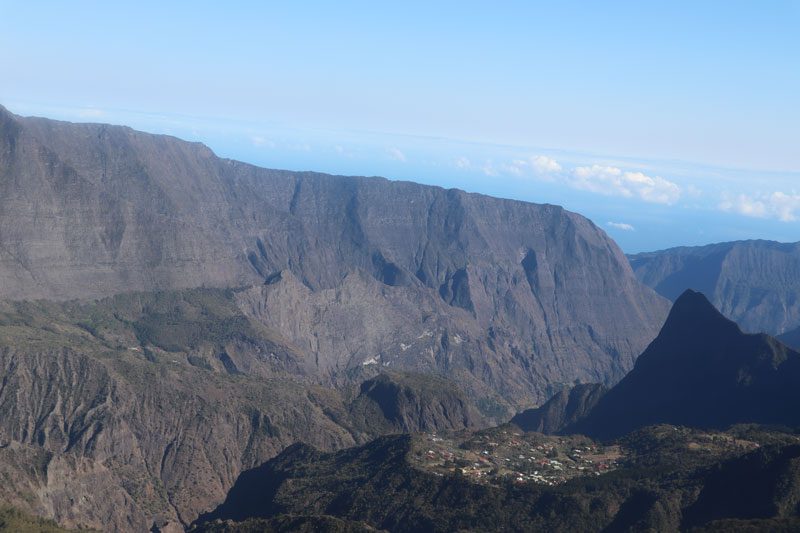
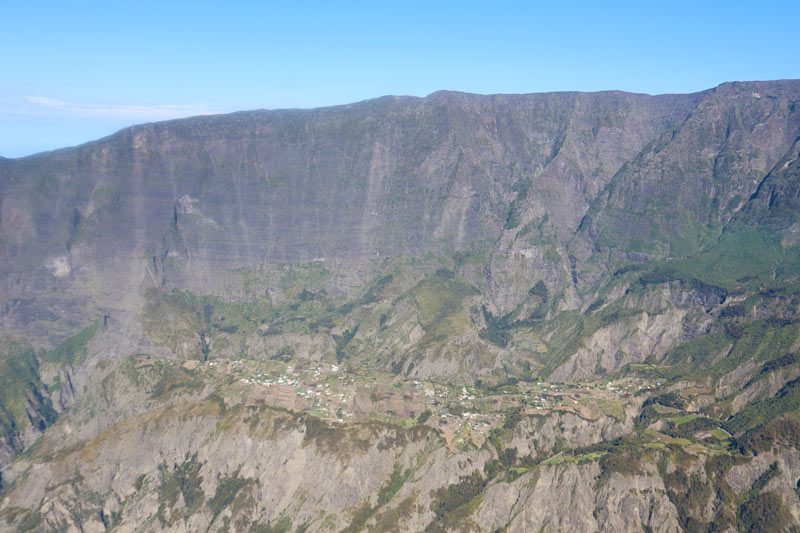
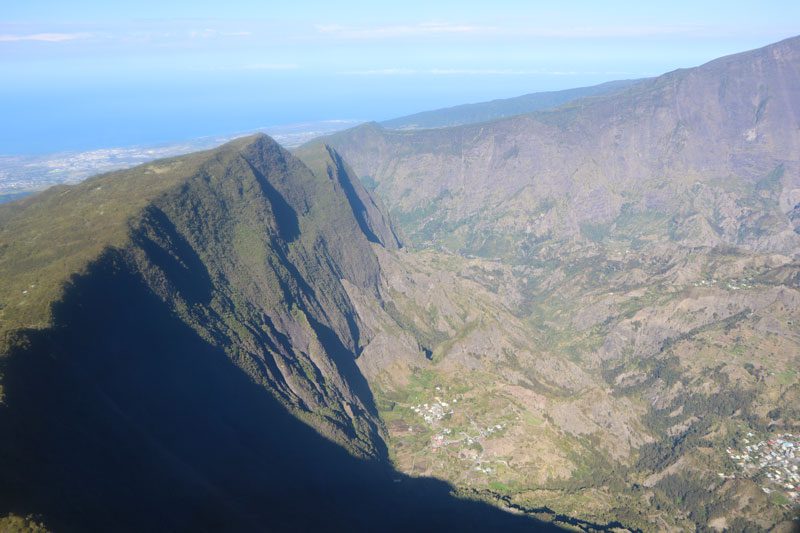
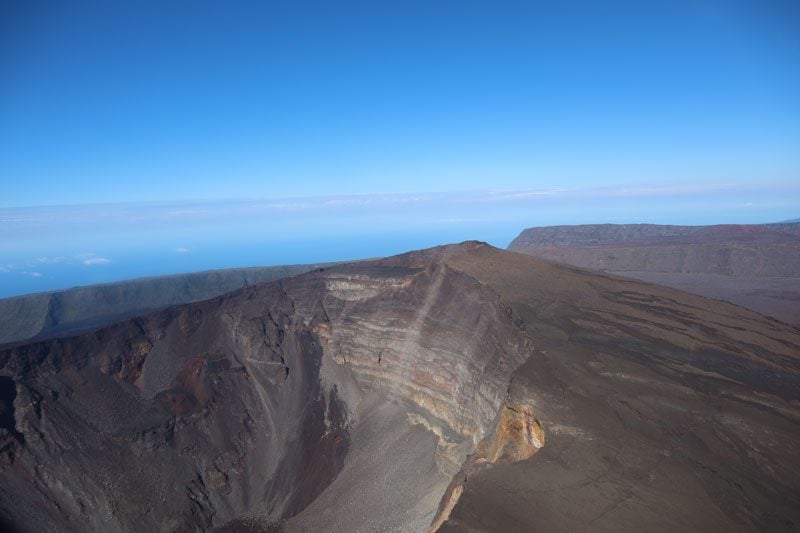
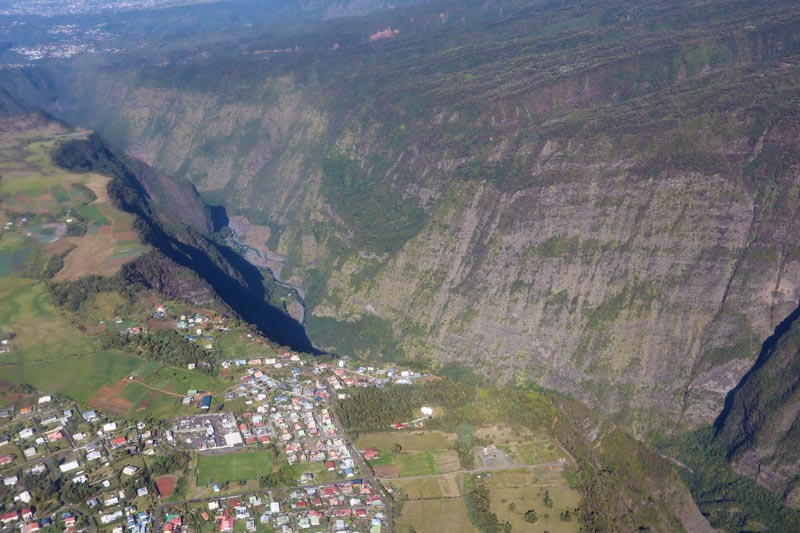
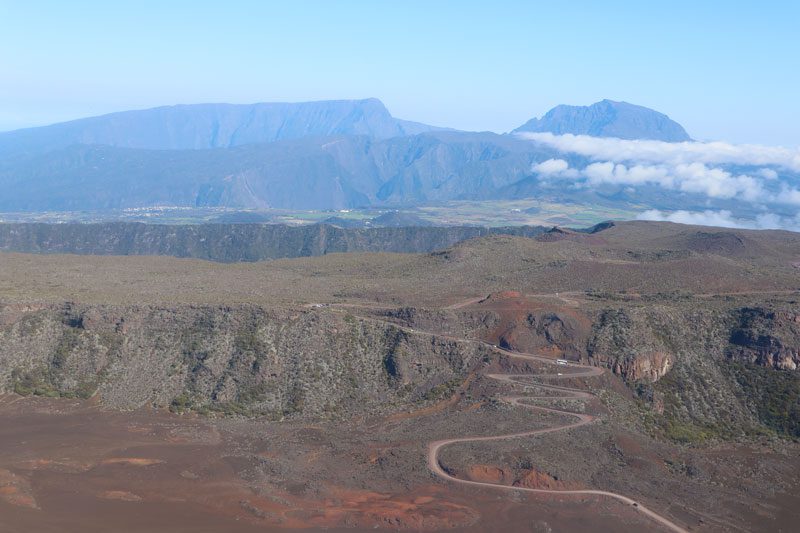
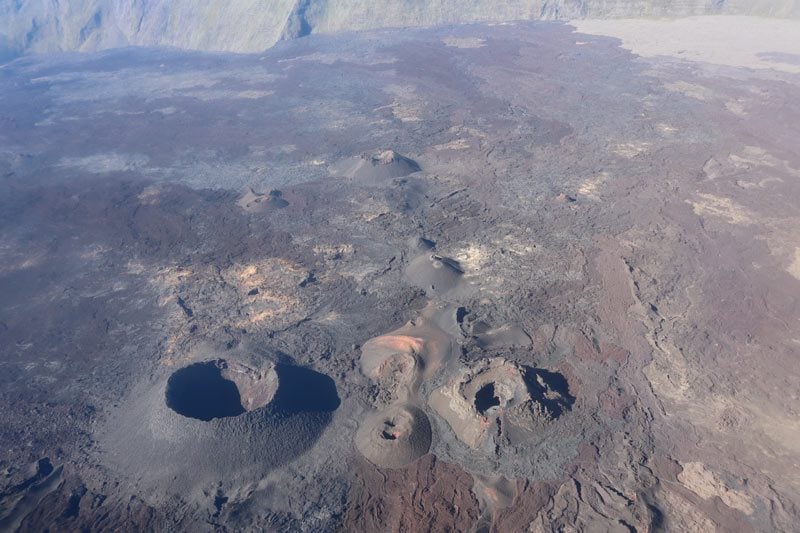
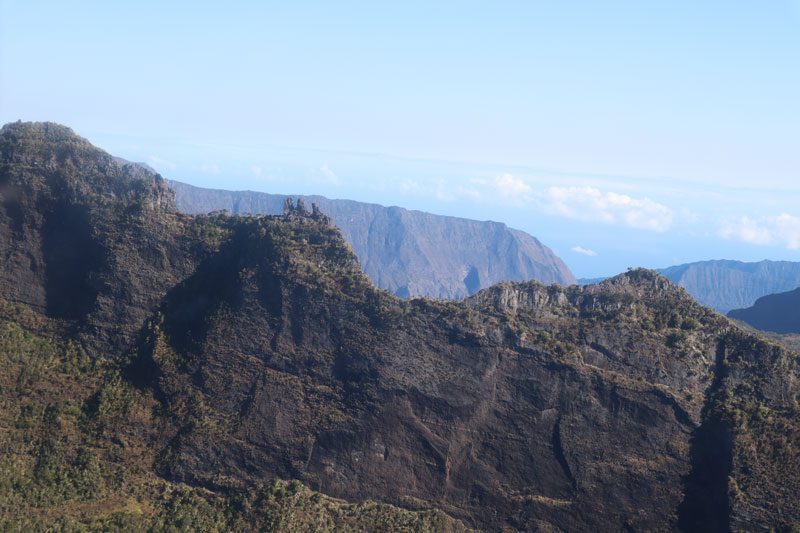
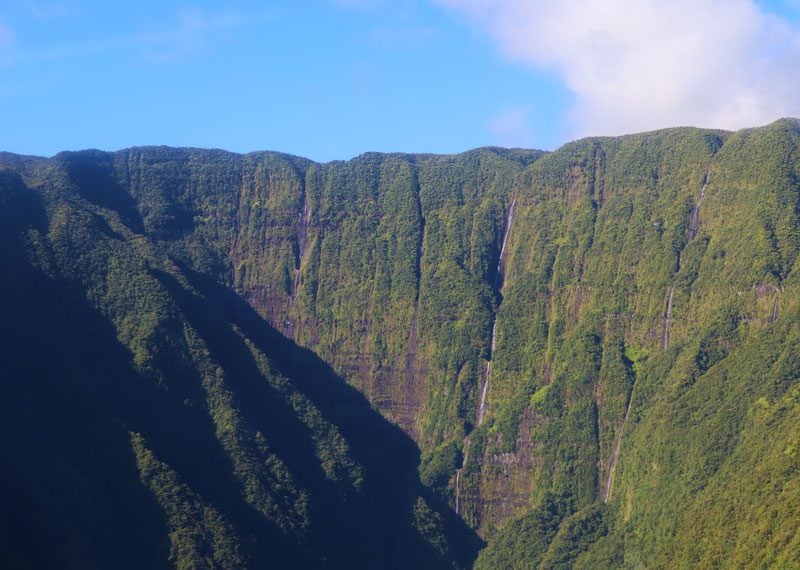
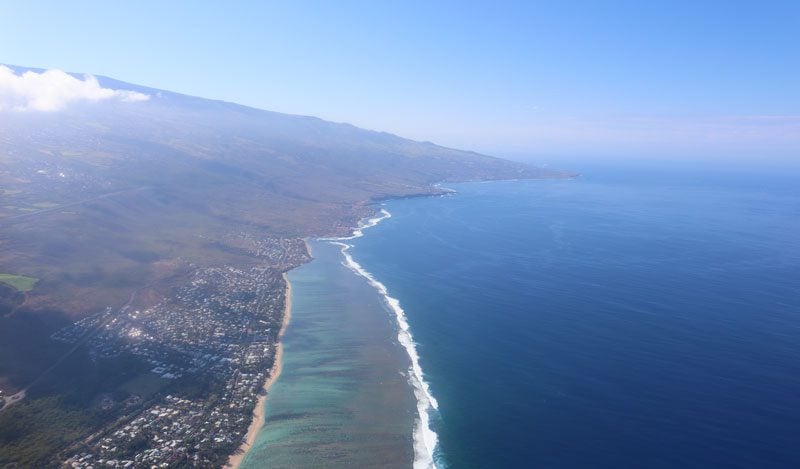
(1) in general, the clearest skies are in the morning hours but if it’s forecasted to be an absolutely sunny day throughout the island, the late morning flights will have less glare as the sun is higher in the sky and not in your face. Keep in mind that on most days, clouds form over the peaks by 11 am. (2) If you have a soft stomach, don’t eat too much before the flight and take half of a motion-sickness pill. (3) Scenic flight on small planes are also possible. however, they cannot maneuver as well as helicopters in such rugged terrain or fly as low above the ground. (4) The captain is the one assigning your seat so if you want a window seat in the front, do a bit of pre-flight schmoozing and simply ask for it.
Scenic Drive to Dos d’Ane
With most of the day still ahead, head on a scenic drive to the village of Dos d’Ane, which is also the starting point for the hike to the Cap Noir scenic lookout. This is a relatively short 3-4 hour excursion, highly recommended thanks to its proximity to the coast and the stunning scenery.
The drive from la Saline-les-Bains takes about 50 minutes, and once you veer from the coast and begin climbing the mountains via the D1, the drive is tricky with a manual car, thanks to a continuous stream of sharp bends and local traffic. Drive to the top (follow signs to Cap Noir) and park wherever you can.
Hike to Cap Noir
One of the best hikes in Reunion Island, the Dos d’Ane to Cap Noir hike packs in a lot of breathtaking views in just a three-kilometer loop. You can begin from Roche Verre Bouteille or the Cap Noir trailhead, but we found the latter to have its inclined sections spread more evenly.
The highlight is the Cap Noir lookout, one of the most famous spots on the island. From here, the Bras des Merles valley cuts through two deep ridges, and its narrow maze leads straight into Cirque de Mafate, the most inaccessible of Reunion Island’s three cirques. You can also spot a narrow, mind-boggling path cut straight into the ridge on the right side.
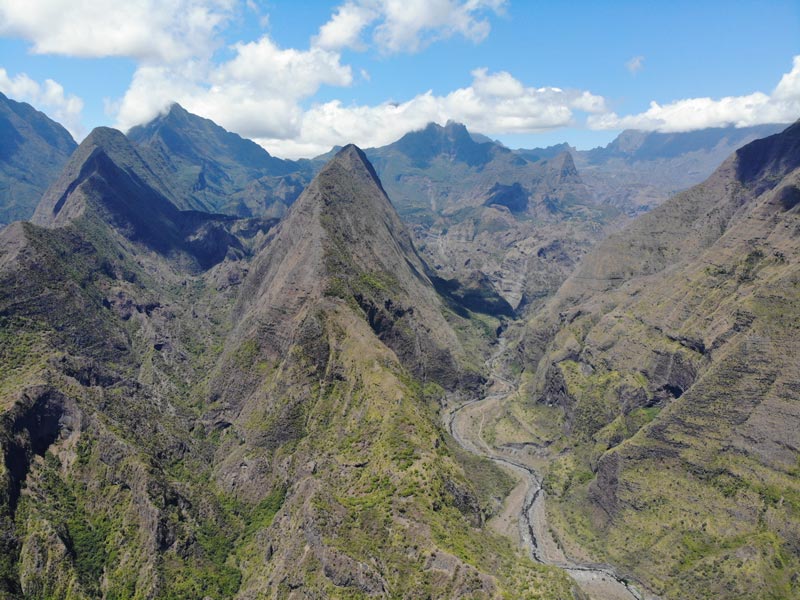
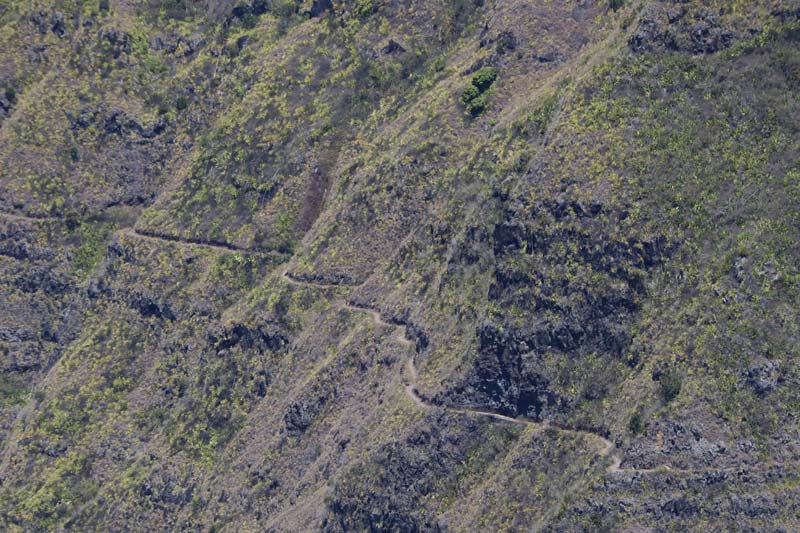
The hike then ascends via steps and ladders to Roche Verre Bouteille, a peculiar-looking pinnacle that resembles a bottle inlaid with unique rocks. This spot also affords views of the picturesque hamlet of Dos d’Ane and the Indian Ocean. From here, the trail heads back to the Cap Noir starting point via a series of steps.
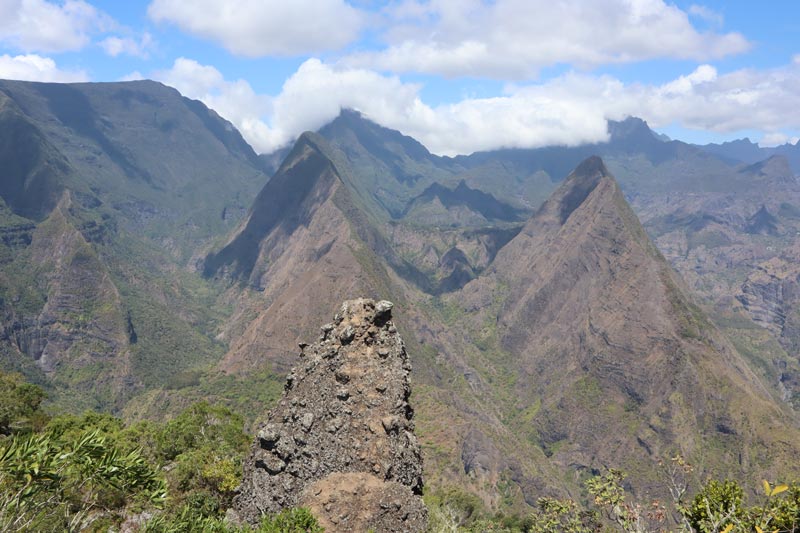
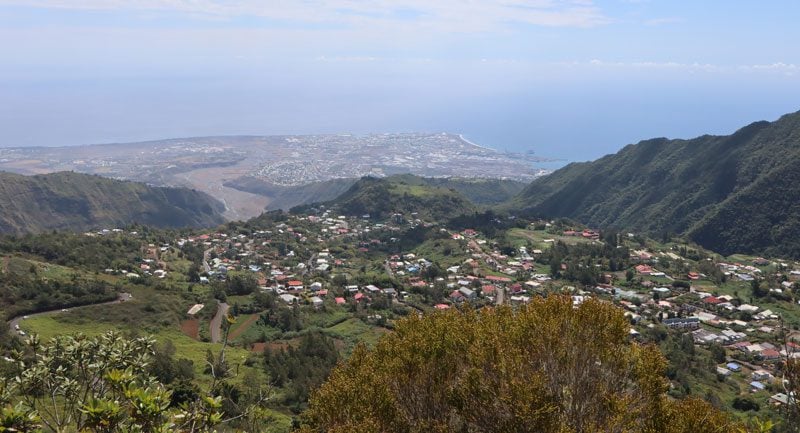
Logistics: distance – 3km (loop) | time: 1.5hrs | difficulty – medium. Bring – snacks, sun protection as the trail is very exposed, walking poles if your knees take a beating, water, and a change of clothes.
Plage de la Salines
We spent the rest of the afternoon on our favorite beach in Reunion Island, a perfect stretch of salt and pepper sand on the prettiest section of the island’s small lagoon. We found this beach to be the quietest, especially considering its proximity to some of the more popular beaches on the island, such as Plage de l’Hermitage. The snorkeling is not bad for Reunion Island, so don’t forget your gear. The coral is mainly bleached, but many tropical fish are around.
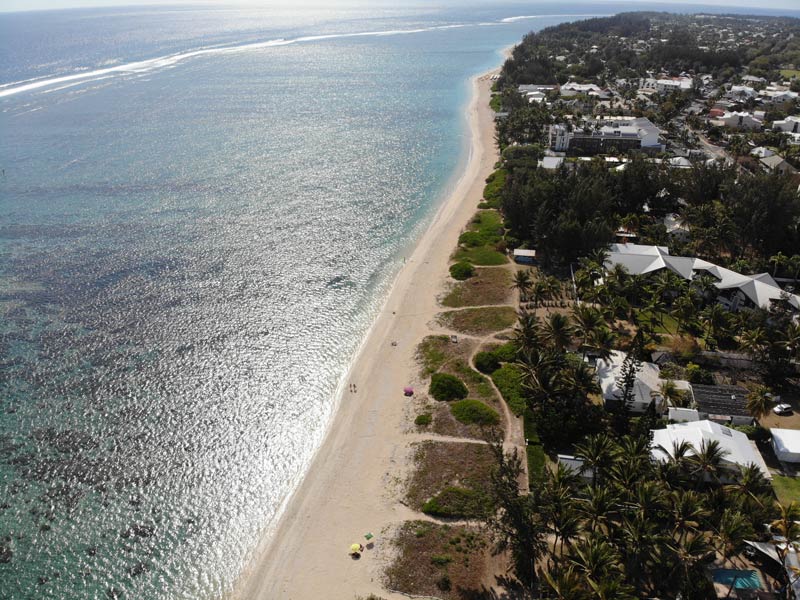
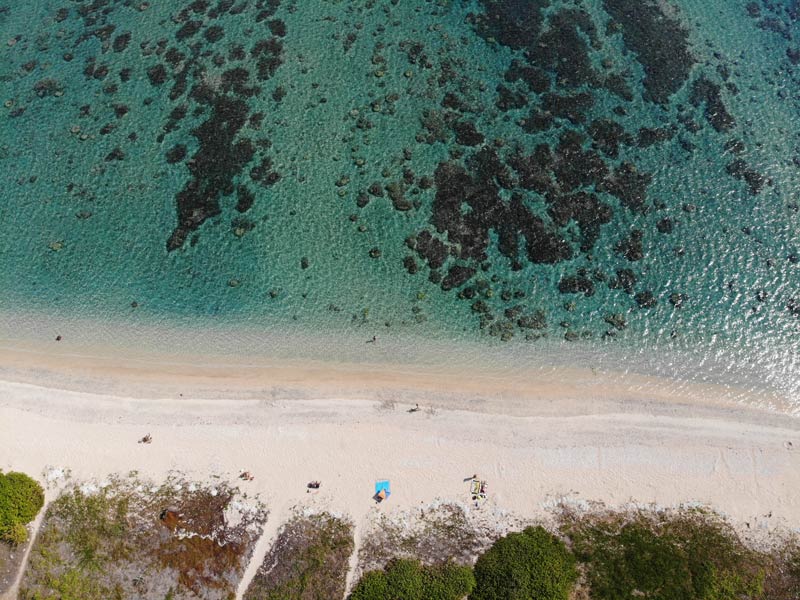
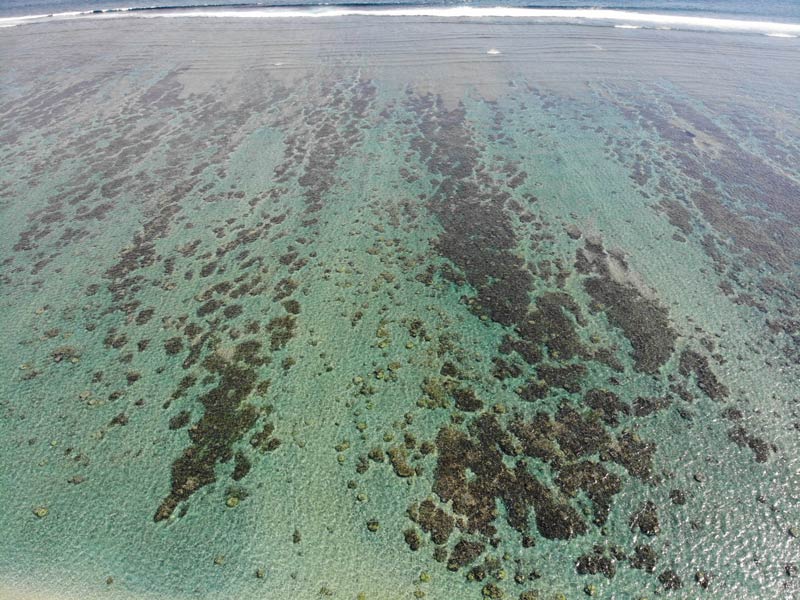
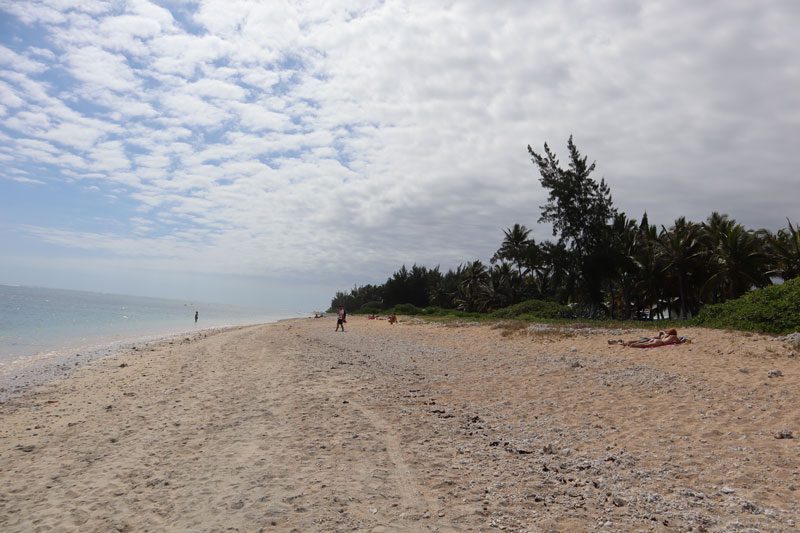
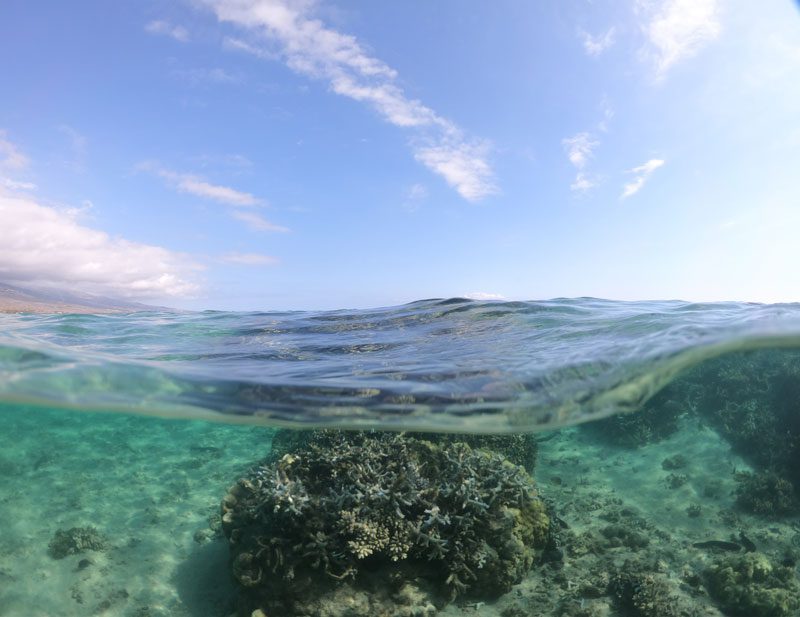
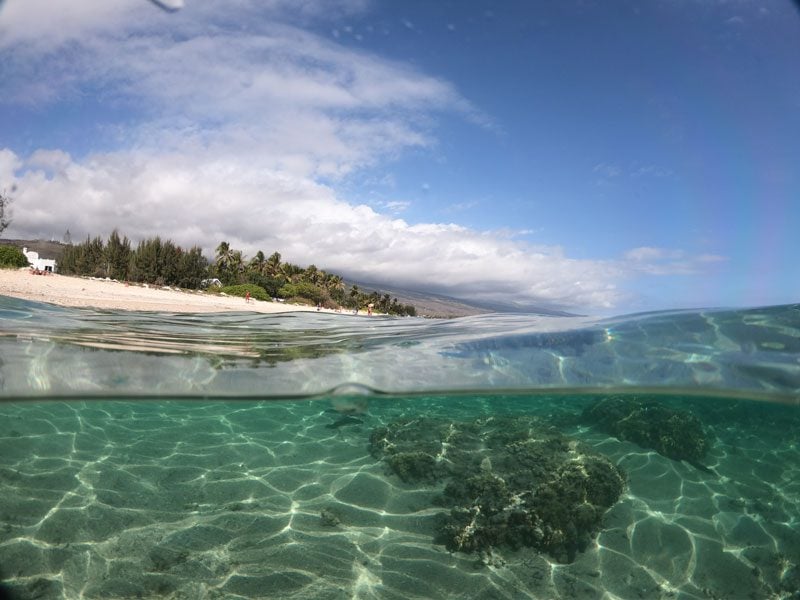
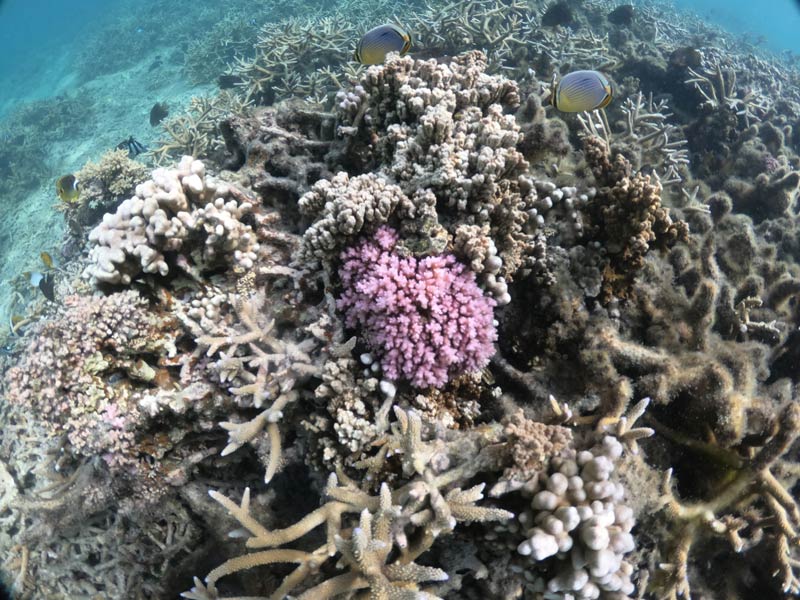
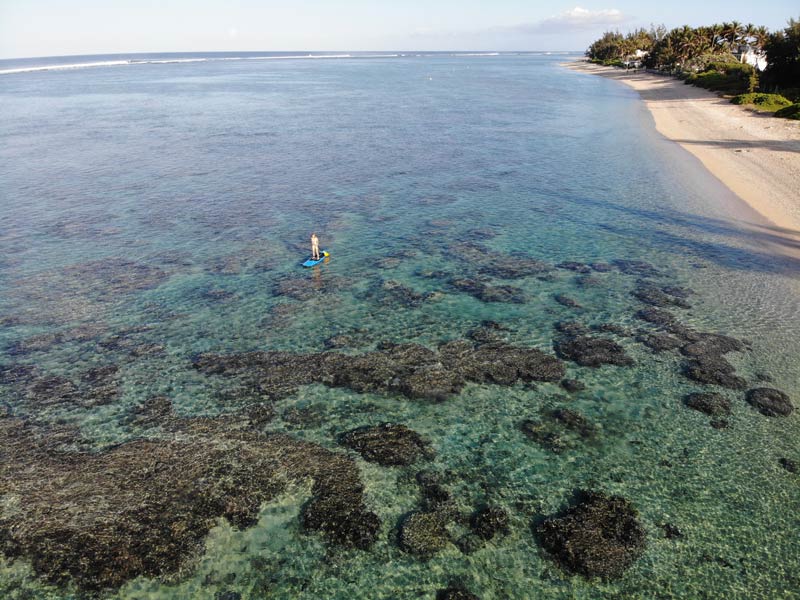
Evening in St Leu
We headed south to happening St Leu for dinner and drinks, where Sunday nights during the summer can be pretty festive (check with your hosts). We were lucky as there was a street festival taking place. The mojitos were extra strong, the food was just OK, and the music was a mix of local French hip-hop and rap on one stage and corny 70’s disco for the old-timers on the other. It was nice to mix with the locals and to see how seemingly detached they are from the troubles of “mainland France” yet so attached in many ways.
Day 3: Maido Lookout, Roche-Plate Hike & Beach Time
The third day takes it up a notch from the previous and takes us to one of Reunion Island’s most iconic lookouts and officially down into the cirques. We’ll end the day at the beach and taste some Creole food for dinner.
Scenic Drive To Maido Lookout
The drive from la Saline-les-Bains to the Maido lookout takes about 70 minutes without traffic. Once you leave the Route des Tamarins and head into the mountains on secondary roads (especially the D5 and D6), you enter a different world in Les Hauts de St-Paul. These simple hamlets overlook the ocean and are the historical homes of mixed-race Creoles, and less fortunate white farmers forced to move up from the coastal plain (see Reunion Island History for more details). The higher the altitude, the less gravitational pull by the wealthy coast.
This is another challenging drive, especially with a manual car. You constantly face an uphill drive with bend after bend, incoming traffic, and the occasional public bus. You enter a typical cedar forest a few kilometers before the lookout, and the final leg is above the treeline. The rulers here are the plants and bushes that feed off the moisture in the misty clouds that roll in at this altitude. It’s quite surreal, considering you’re just minutes away from the tropical coastline. Several interesting stops are on the way, but we’ll save those for the return leg.
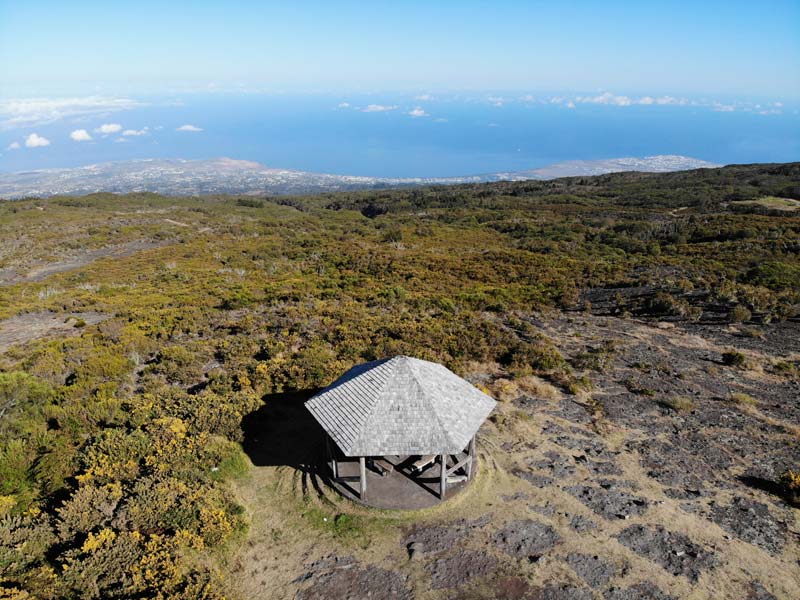
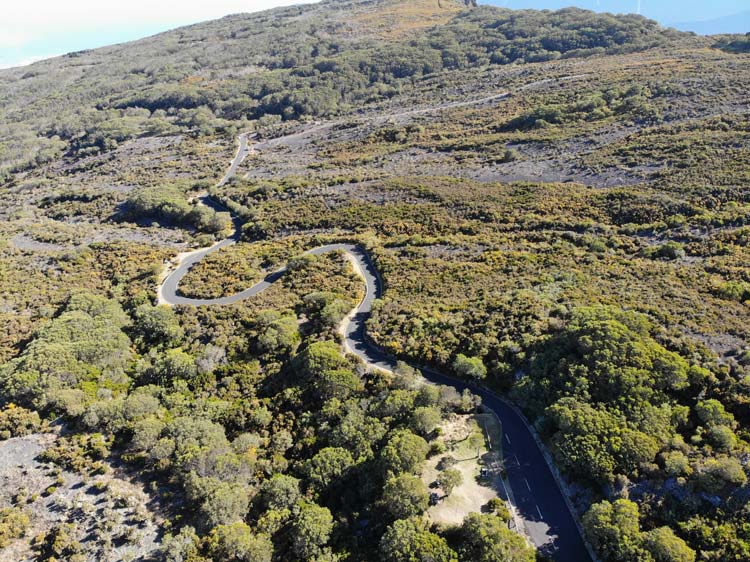
If you’re planning to hike from the Maido Lookout, aim to be there by no later than 8 am to enjoy a cloud-free lookout and still have time to hike down into the cirque (beneath the cloud line). You’ll also avoid the bulk of the tourist buses which congest both the road and the lookout. If just driving here for the scenery, keep in mind that by noon, the place will be covered with clouds.
Le Maido
One of Reunion Island’s must-see attractions, Le Maido, is a stunning lookout perched at an altitude of 2,205m on a flat section of a rampart peering straight into the heart of Cirque de Mafate, the island’s most inaccessible cirque. On a cloud-free morning, the scene is spectacular: an amphitheater of mountains and pinnacles separated by deep ravines and valleys. Here and there, the landscape is dotted with tiny hamlets where you can’t help but wonder how on Earth the folks down there do their grocery shopping. You can see the clouds creeping in from the moist East Coast, unable to penetrate the peaks fully, but only for now.
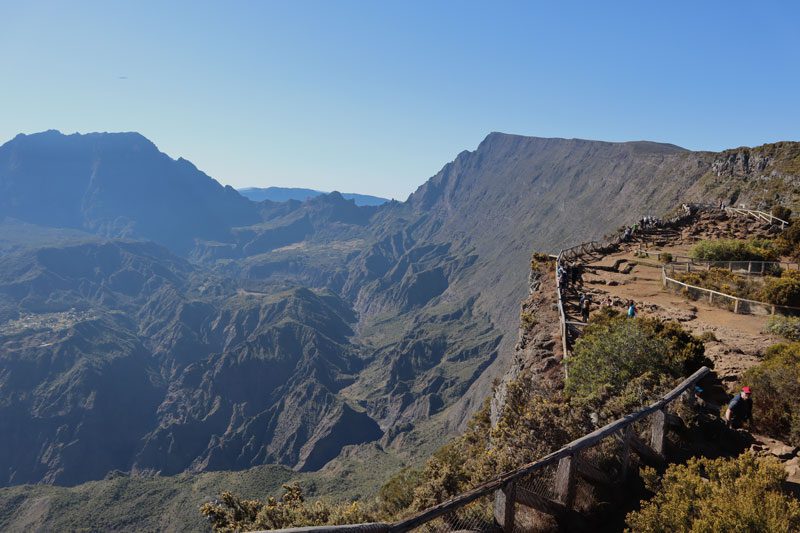
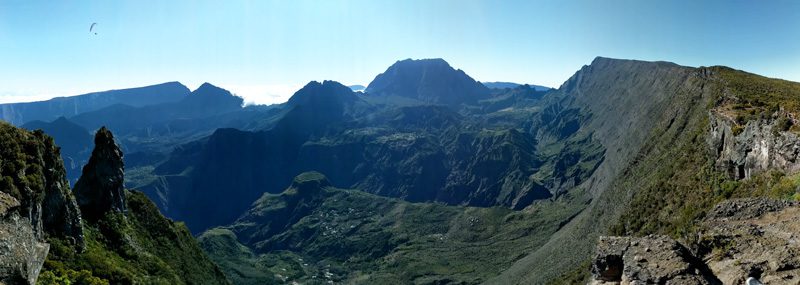
The cirques were formed when the volcano’s magma chambers emptied and collapsed. The rest was sculpted by rain and erosion, but a plaque at the lookout will explain in more detail. Living off the grid, the first settlers in the cirque were slaves who escaped the hardships and fled to the most remote area of the island. Many villagers are maroons – the descendants of the escaped slaves. The Maido is also the starting point for many hikes, including the hike to Grand Benare (2896m) and to Roche-Plate (see below).
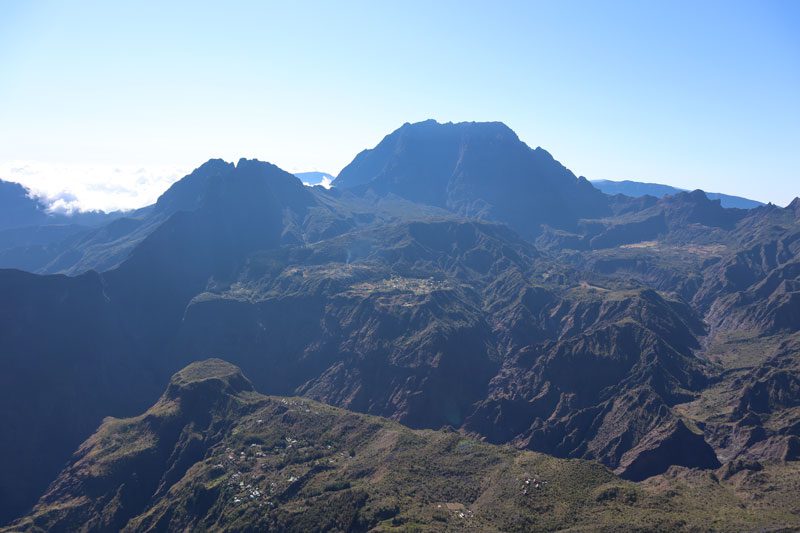
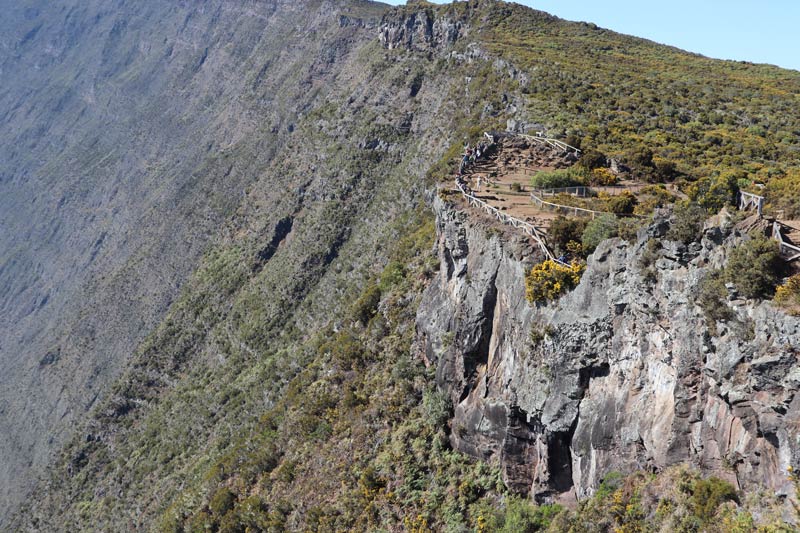
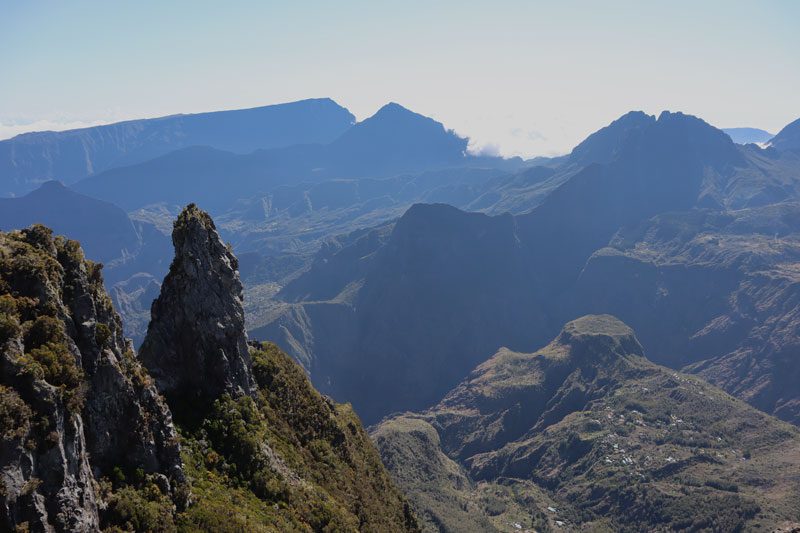
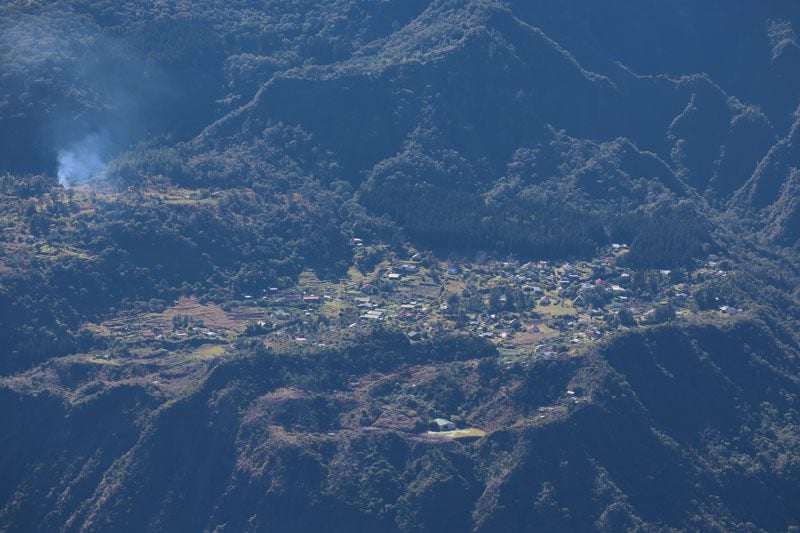
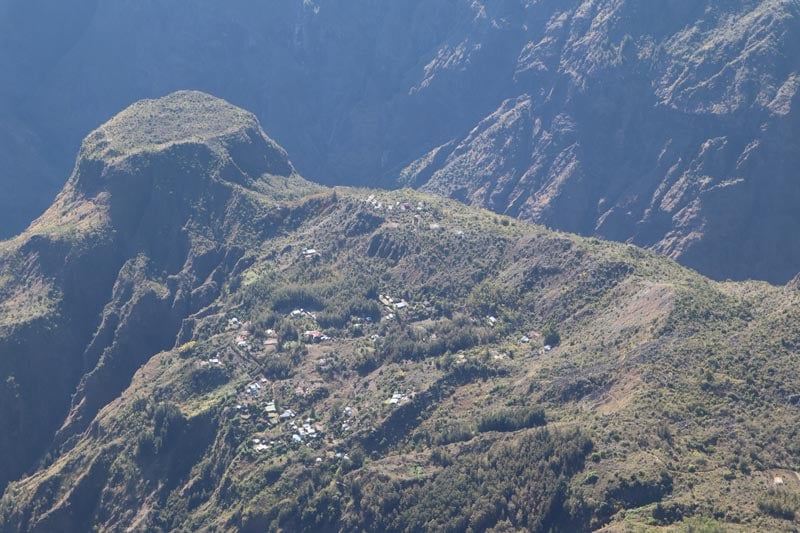
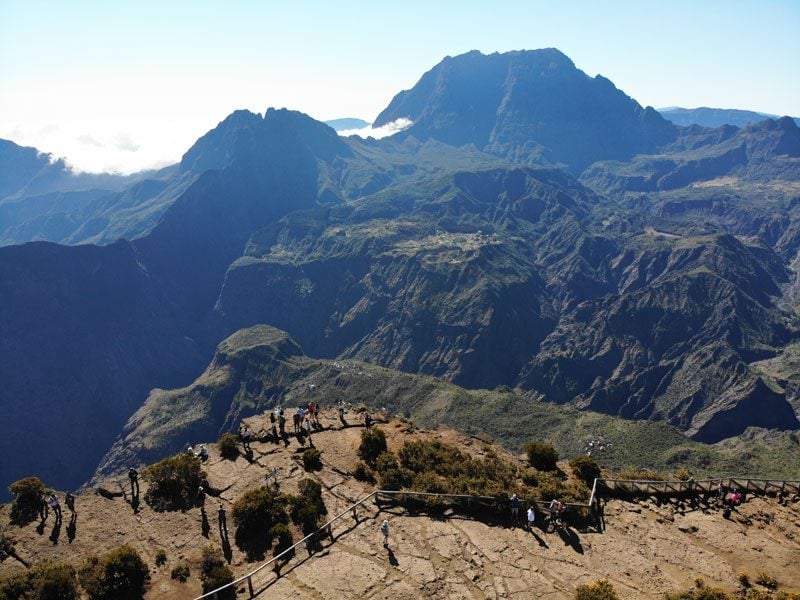
Logistics: as mentioned, be here as early in the day as possible, though, for photography, I would say 10 am is the “golden hour.” By noon, the lookout is usually covered in clouds. There’s a large parking lot right at the very top, but if that’s full, there’s another lot about 150m down where you came from that also houses a very pampering kiosk, considering the location. It can be a bit chilly at the top, and if you have binoculars, bring them with you to see what’s happening in those lonely hamlets inside the cirque.
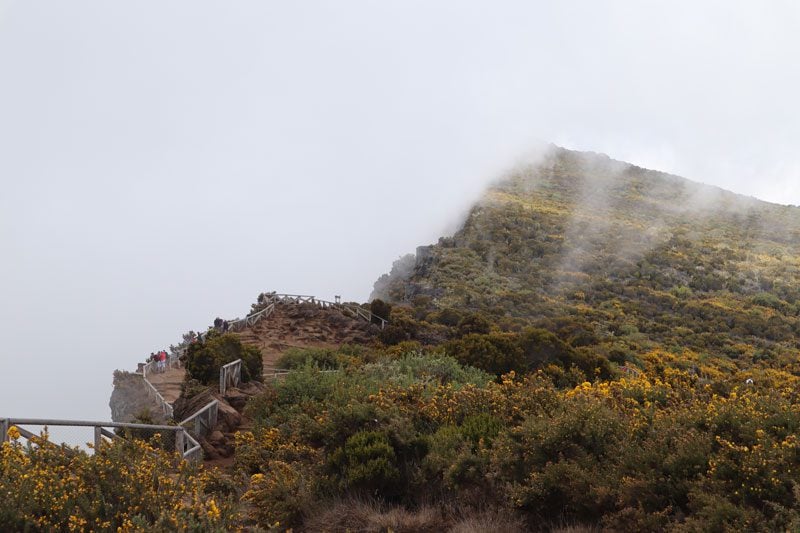
Sentier de Roche Plate
The hike from Le Maido to the hamlet of Roche-Plate is one of the trails leading into the Cirque de Mafate. It’s a beautiful trail that follows the bending contours of the ramparts, finally zig-zagging its way down to Roche-Plate. You can use this trail for a multi-day exploration of the Cirque de Mafate, but do book your accommodations in advance. To pick up the trailhead and save yourself a useless and agonizing ascent back to Le Maido car park, drive down from the lookout for about 2km until you see the clear sign for the trailhead on your right side.
The hike offers beautiful views of the cirque and is accompanied by interesting plants and birds. However, we had no plans of making it to Roche-Plate, so we only hiked a portion of the trail, which was enough for us (on the last day of the trip, we’ll “properly” hike into the cirque from a different location). We started hiking at about 9:30 am and returned at noon.
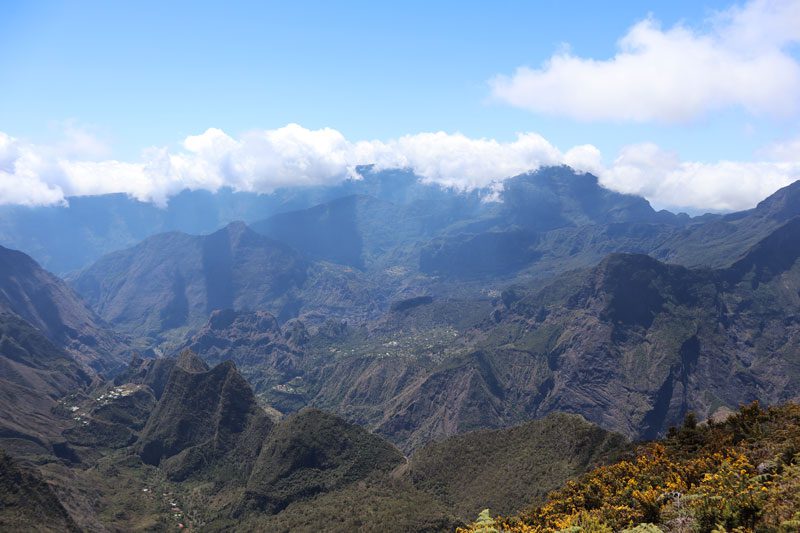
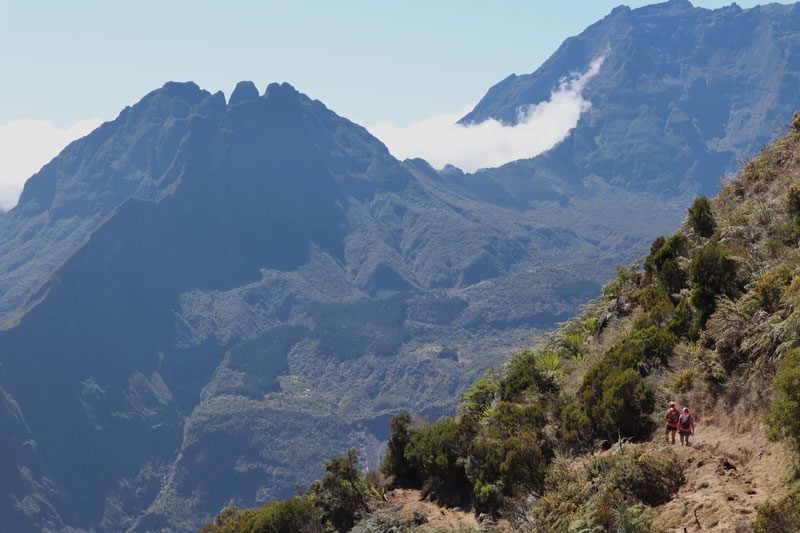
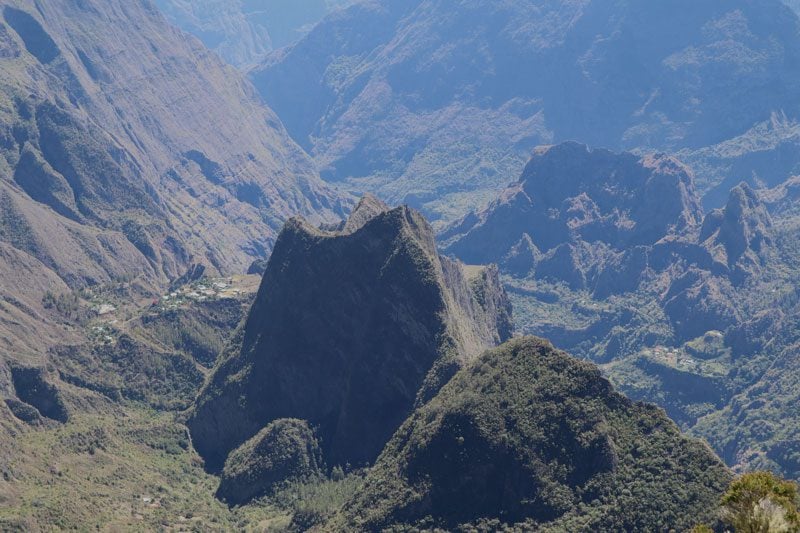
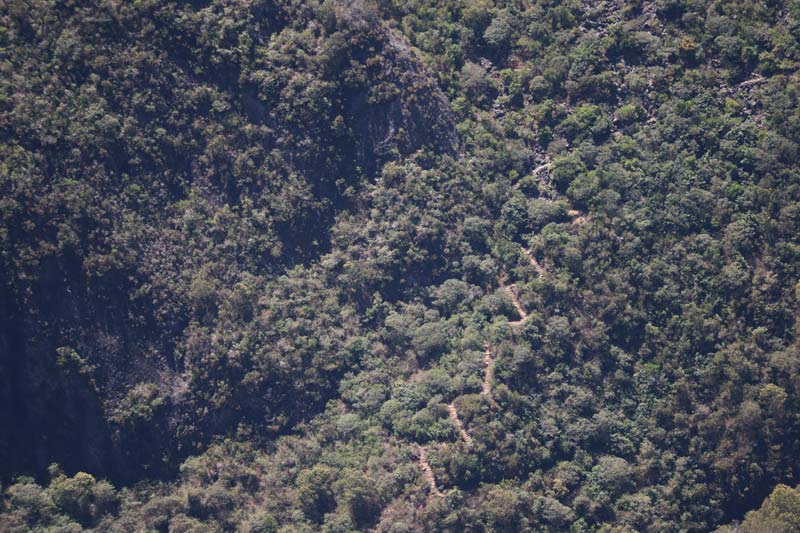
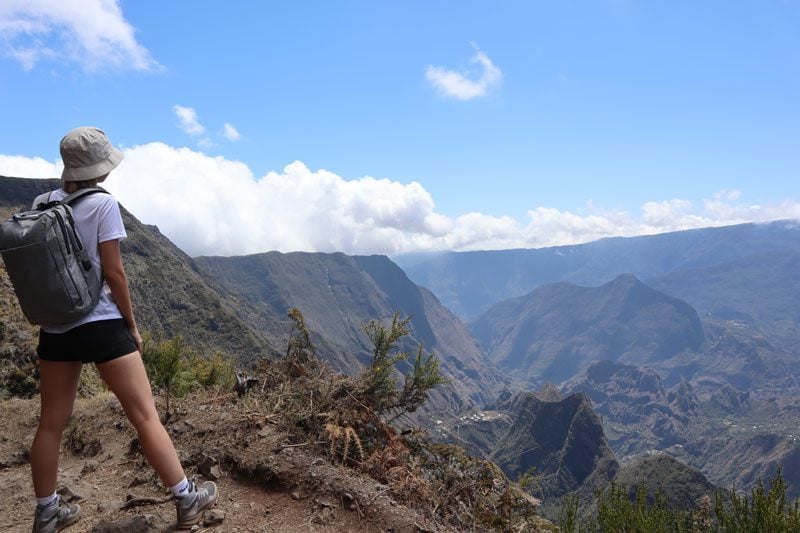
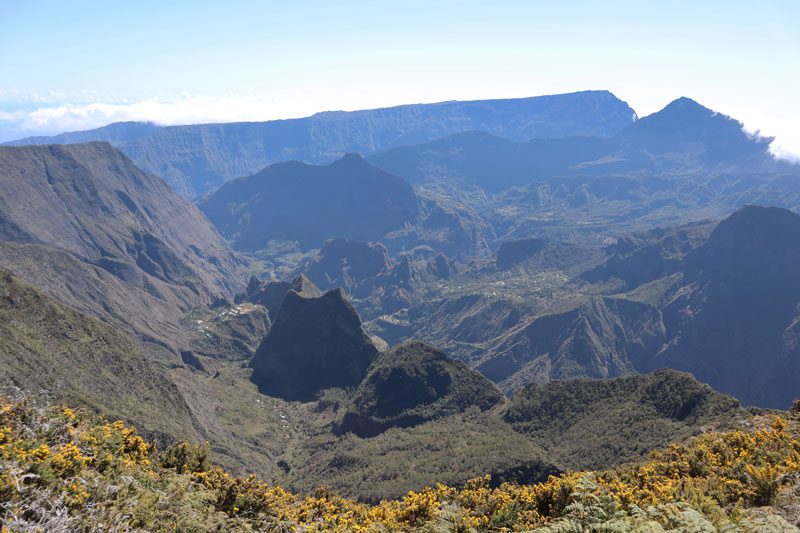
Logistics
Distance – 10km (return) | time: 5.5hrs | difficulty – medium. Bring – snacks, complete sun protection (the first section is very exposed, and the weather inside the cirque is warmer and drier than at the top), more than the usual amount of water, walking poles if your knees take a beating, change of clothes and something warm for the finish, cash for the kiosk at the bottom Maido parking lot (it might be closed when you arrive).
Aromatic Distilleries
This area is also known for its parfumeries and local distilleries that produce extracts mostly from geranium and other regional plants. On your way back down to the coast, stop in at least one and stock up on a few bottles of extract to go with the burning apparatus. Each scent is to be matched with its medicinal qualities; some are good for migraines, others for fatigue, etc. We visited Parfumerie Maido (they also offer tours) and L’Alambic Begue.
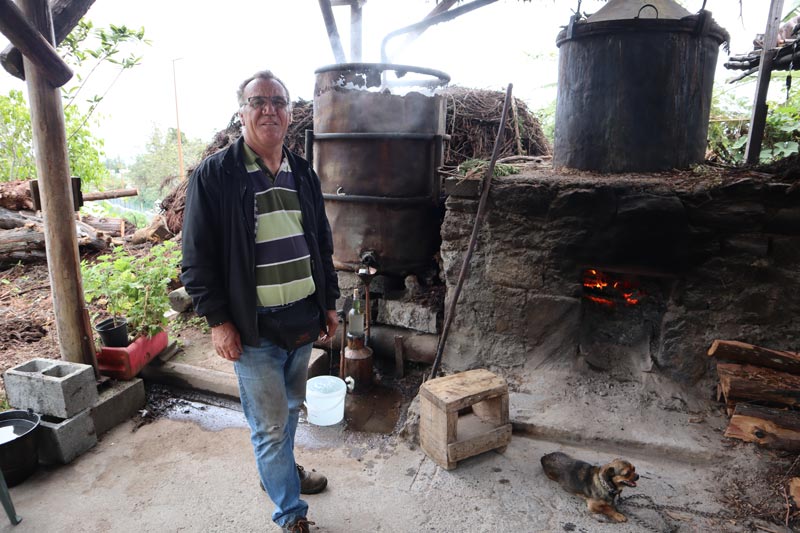
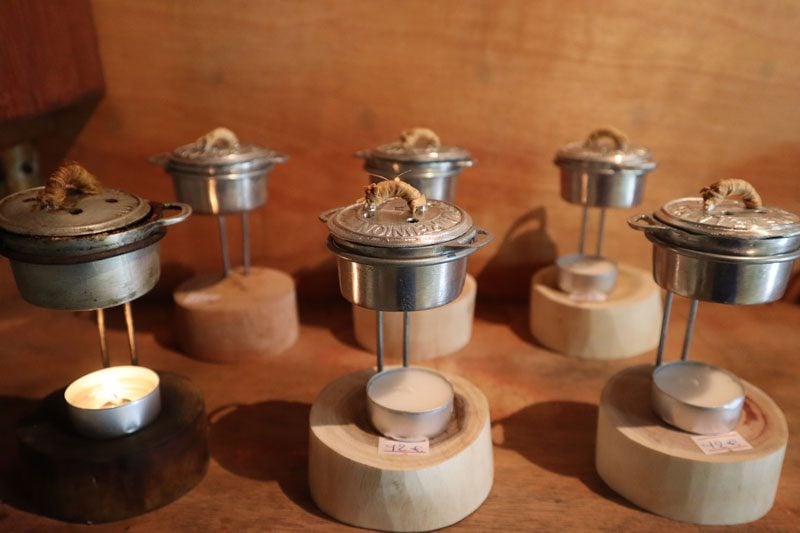
Afternoon at Plage de L’Hermitage
Plage de L’Hermitage is Reunion Island’s most popular beach. It’s popular with tourists and locals alike (especially on weekends). The sand is as white as it gets on the island, and the crystal clear water and casuarina trees provide some shade. However, this wasn’t our favorite beach at all, considering the crowds. We preferred Plage de la Salines.
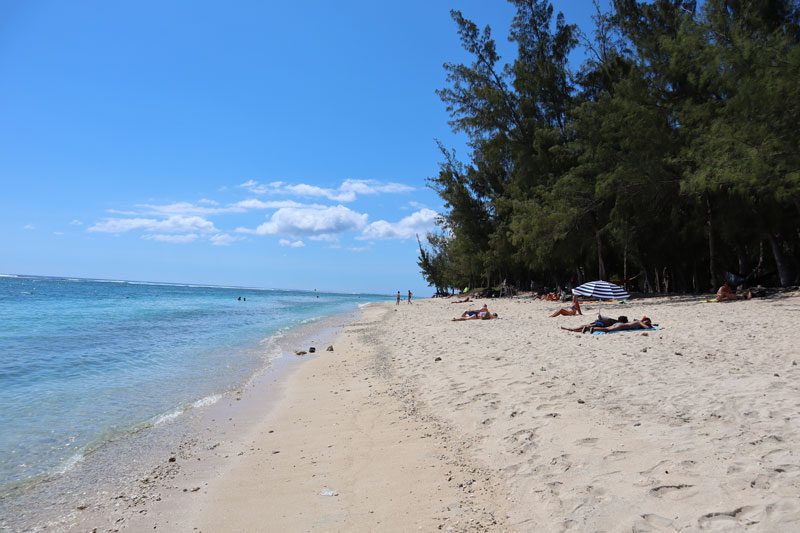
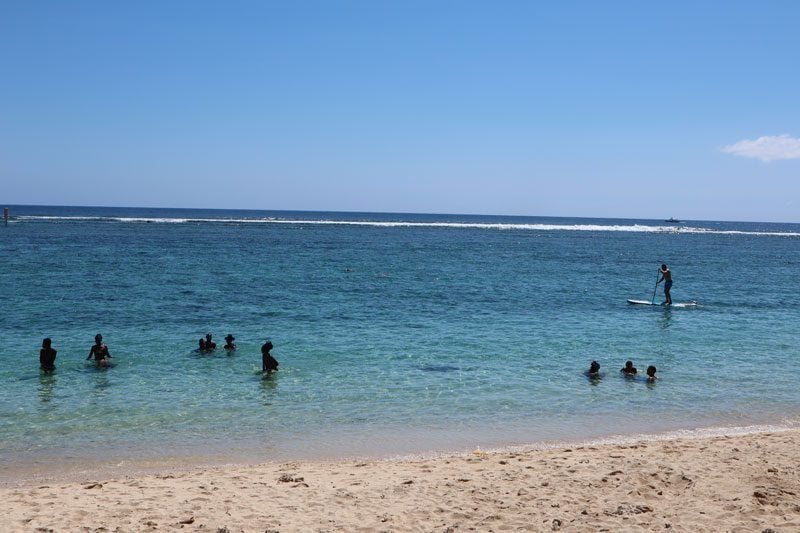
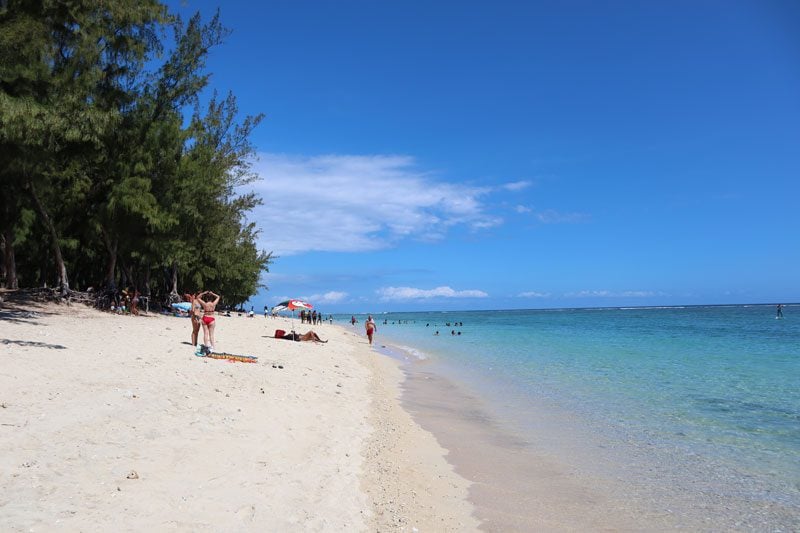
Dinner at La Bonne Marmite
You must try Creole food at least once during your holiday in Reunion Island. In our case, it was more than a one-time affair, as the spicy food is exactly what our palette craves. Not only is La Bonne Marmite the best place for Creole food on this side of the island (apart from St-Denis), but it’s also in La Saline-les-Bains, our base on this section of the trip.
The main draw is the Creole buffet dinner, a rich selection of spicy local dishes thrown in with a few Western options. Highlights include various curries (fish and pumpkin were the best), delicious venison, and beef. They also have a pretty good selection of cocktails and local rum. At the end of our meal, our host offered us a taste of the secret house rum spiked with hot chilies. A few drops of that is pretty much all your stomach can endure, but diehard locals like this concoction.
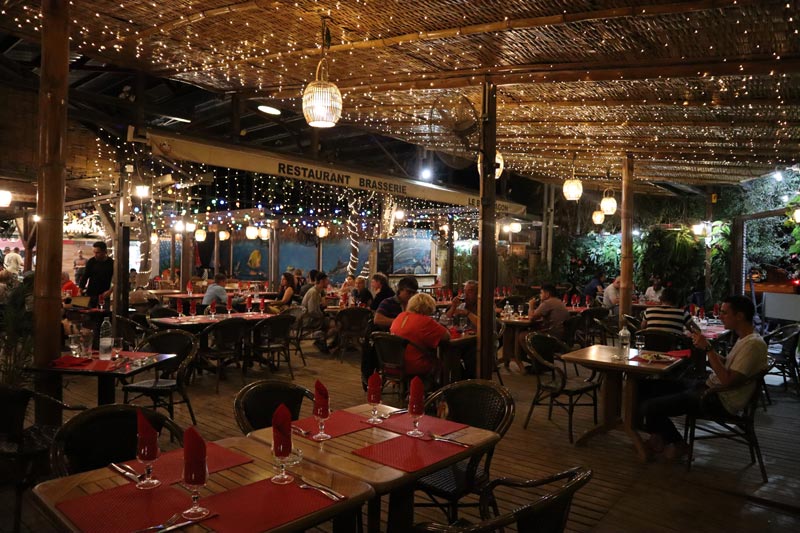
Day 4: Scuba Diving or Hiking & Beach Time
The last day in the first section of our Reunion Island itinerary offers two options. The first includes scuba diving and exploring St-Leu, and the second takes us back to the mountains for a beautiful hike different from what we’ve seen so far.
Option 1: Scuba Diving & Lunch in St-Leu
Scuba diving is not the main reason to visit Reunion Island, but if you’re already here, you might as well take the plunge and see what’s happening beneath the waves. There are quite a few dive clubs around this part of the island, and the best dive sites are just outside the reef or in the deep south, where only rare trips are made (see Reunion Island Travel Tips for specific scuba diving information).
We dove with Scubananas, a very reputable dive center based in St-Leu. This also gave us the chance to explore the town after the dives. We dove at a site called Les Kiosques, which was abundant in hard coral and rarely seen fish such as lionfish and barracuda. We didn’t encounter any sharks or sea turtles but did spend about one hour underwater, and one of us even got our first taste of scuba diving with an introductory “fun” dive.
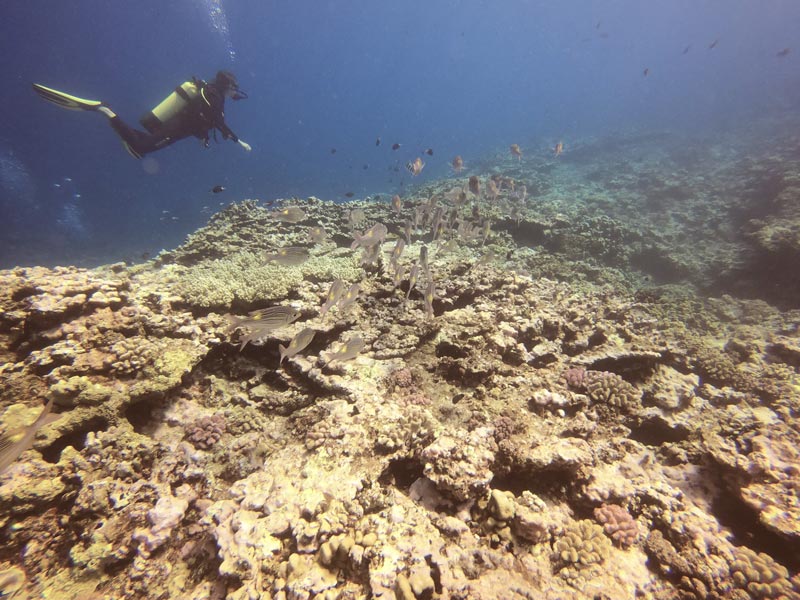
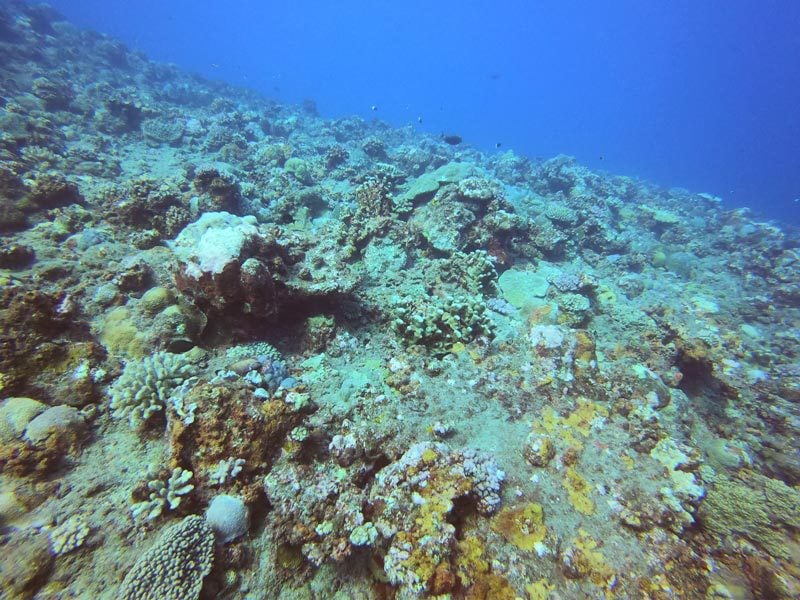
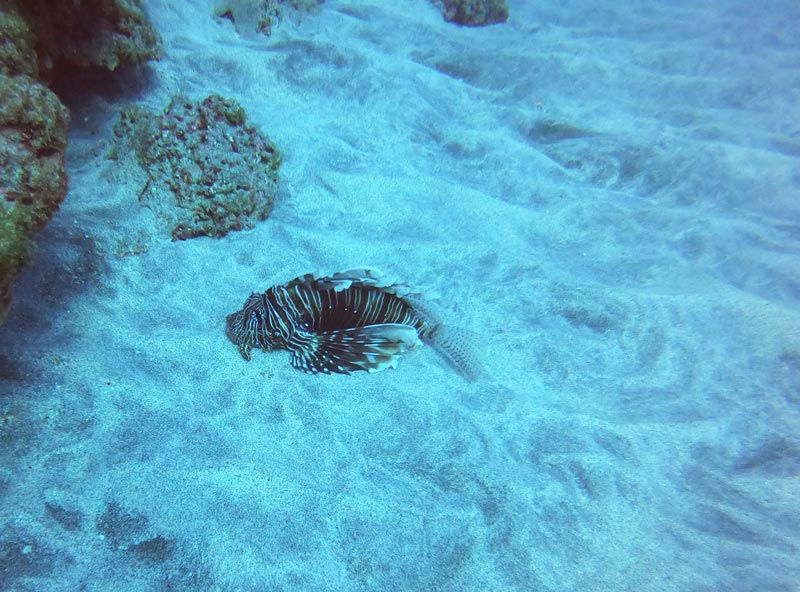
Afternoon
For lunch, you can go simple with a baguette and a bottle of “dodo” (the nickname for the local brew – Bourbon) at one of the seaside snacks, properly dine at La Villa Vanille, or head to our favorite spot – L’Orange Givree. This place has the look and vibe of a beach bar, but it’s in the heart of St-Leu. We went for the grilled tuna and the tuna tartare to go along with some homemade juice. The town’s main church (Notre Dame de la Salette) is right next door, so you might as well have a quick peek if you’re already here.
After lunch, you can either retreat for some beach time (see later on) or head to one of two nearby botanical gardens: La Jardin Naturel (a 10-minute drive from St-Leu) or the Conservatoire Botanique National de Mascarin (a 15-minute drive).
Option 2: Hike in Les Makes
If scuba diving isn’t your thing, use this day for another mountain excursion. The drive from la Saline-les-Bains to La Fenetre des Makes takes about 75 minutes on the twisting D20. The scenery changes from sugarcane fields overlooking the Indian Ocean to a thick forest of cedars.
The road ends at a tiny parking lot where a small trail leads to La Fenetre, another breathtaking scenic lookout (altitude 1,580m). What’s unique about this lookout is that tourists do not frequent it, and it offers the chance to peer into the magical Cirque de Cilaos. For us, it’s a preview of what’s to come in the second part of this journey and a first glimpse (from the ground) of the Piton des Neiges, the island’s highest summit that will be conquered in a few days.
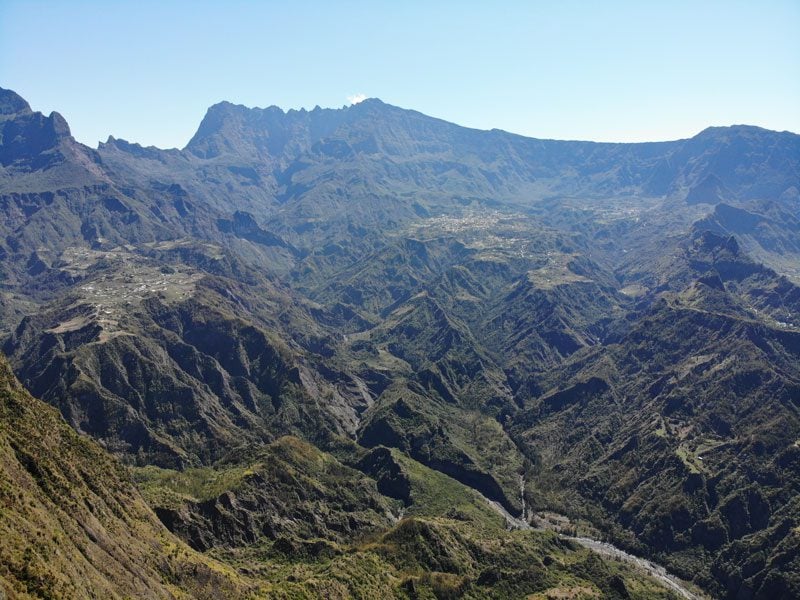
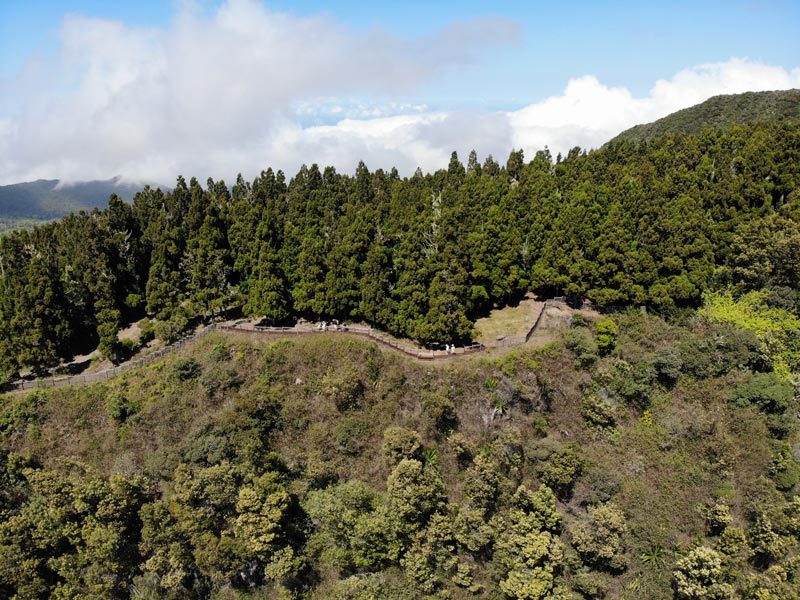
Other notable mentions from the lookout include the village of Cilaos, the dreamy hamlet of Ilet a Cordes, and Grand Benare – one of the island’s highest peaks. The acoustics from up here are superb. We could even hear the trucks honking as they approached blind turns on the road into Cirque de Cilaos.
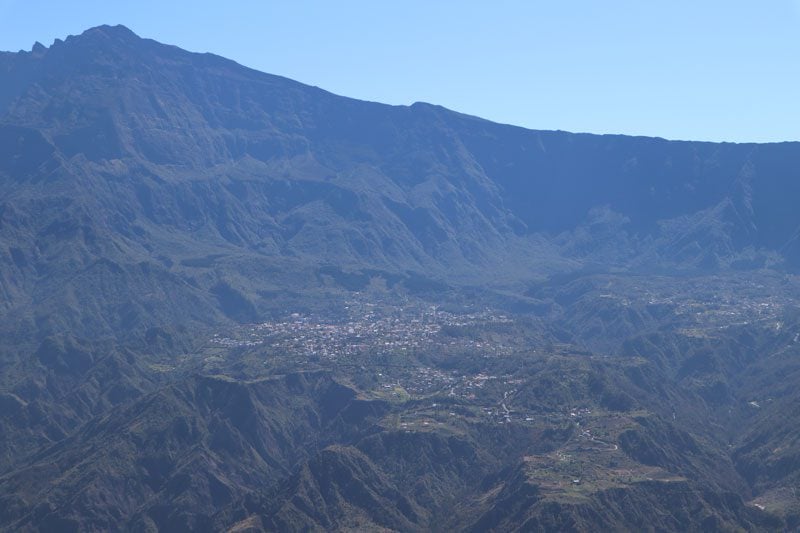
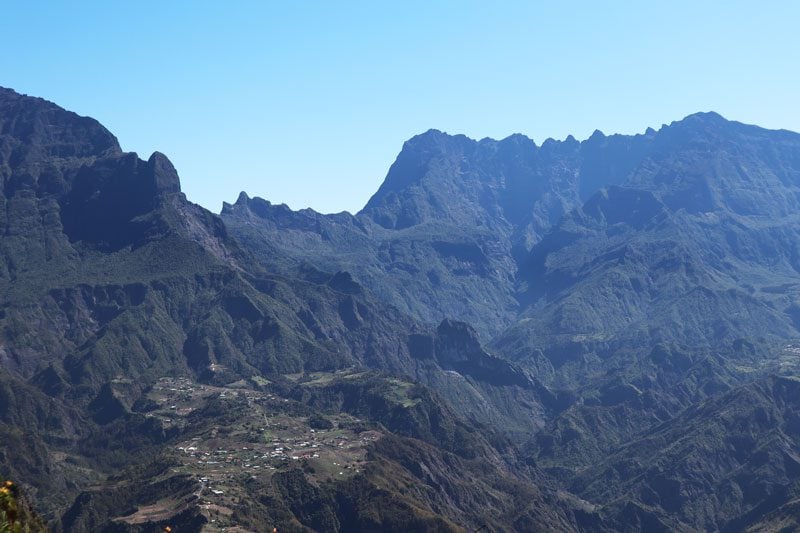
Like all scenic mountain lookouts in Reunion Island, get here early before the clouds roll in (by no later than 10 am). La Fenetre is also a prime picnic spot so pack accordingly.
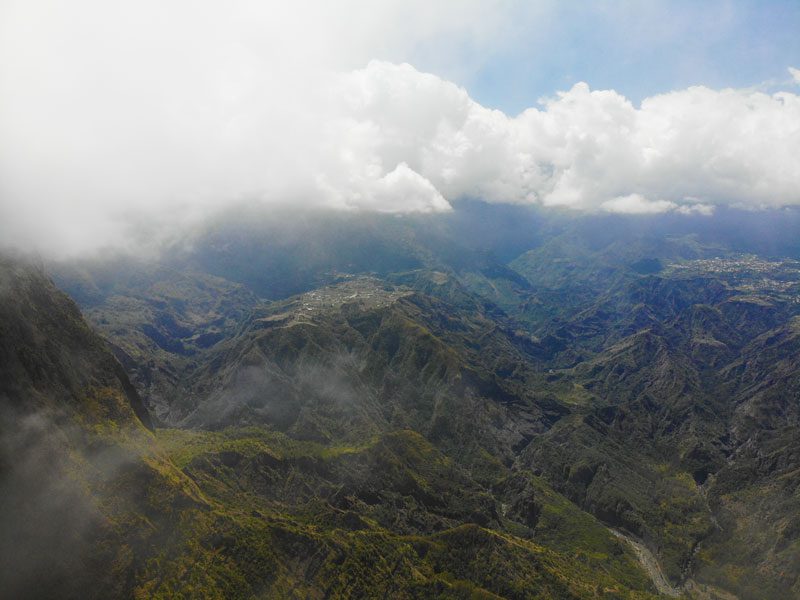
From the lookout, we set out on a looping section of the PR18 trail (follow the steps outlined here). The trail begins with additional lookouts into Cirque de Cilaos before descending into an enchanting forest of cedar trees that chills the air. Before climbing back to the starting point, the trail traverses fields covered in lush tropical vegetation, including wild ginger and arum flowers.
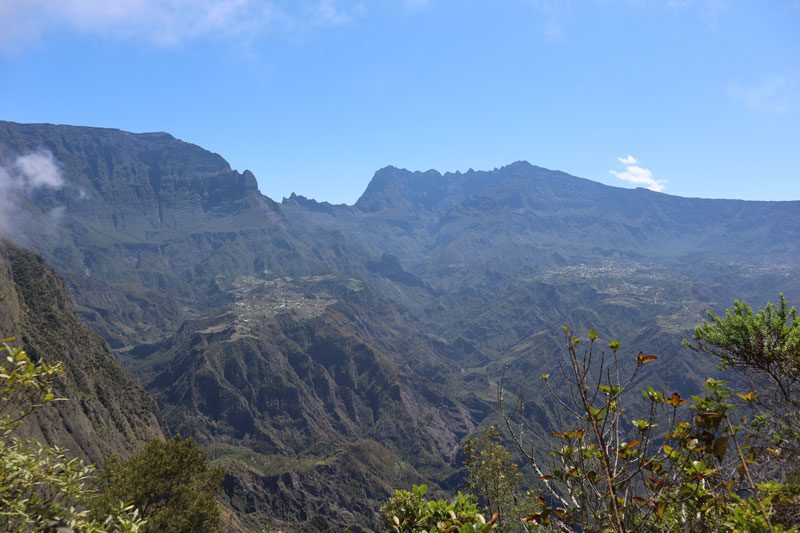
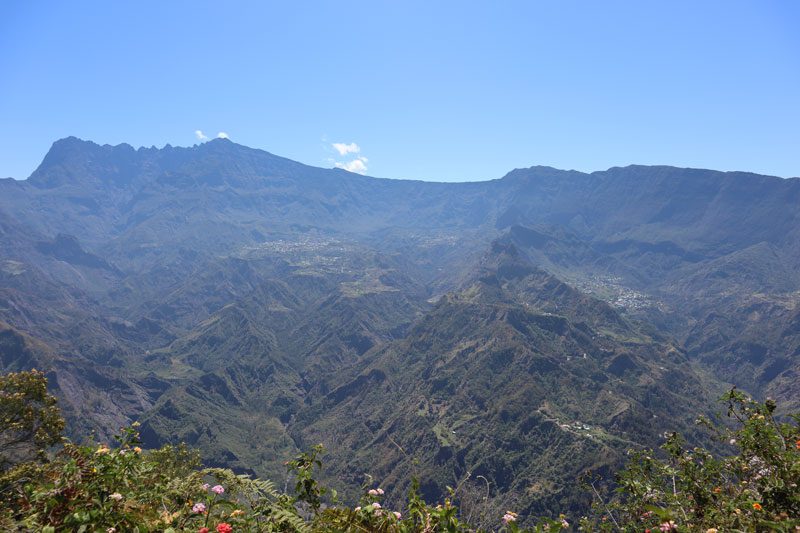
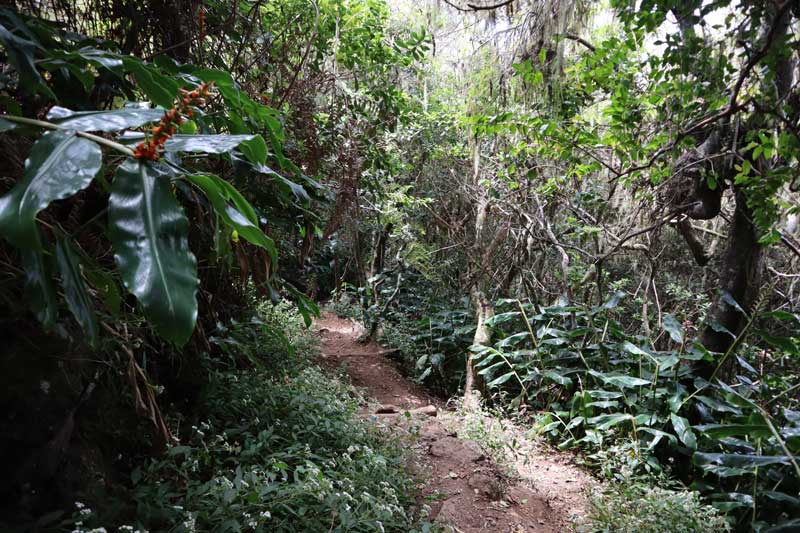
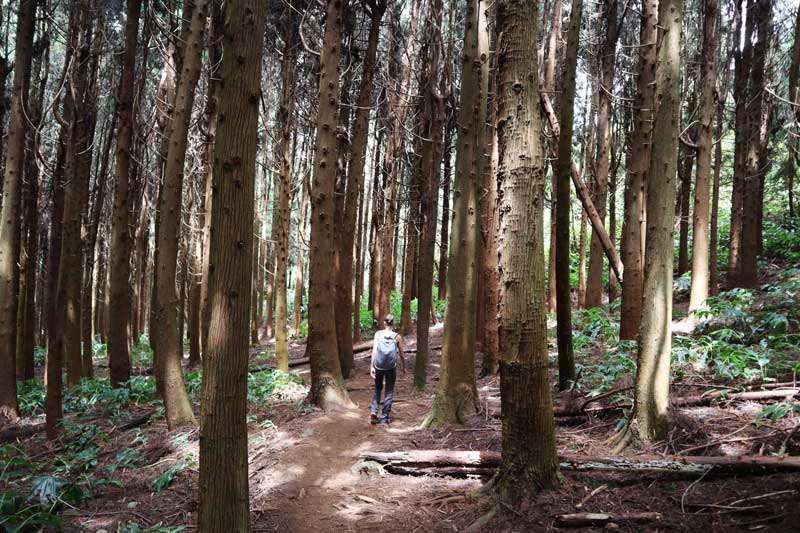
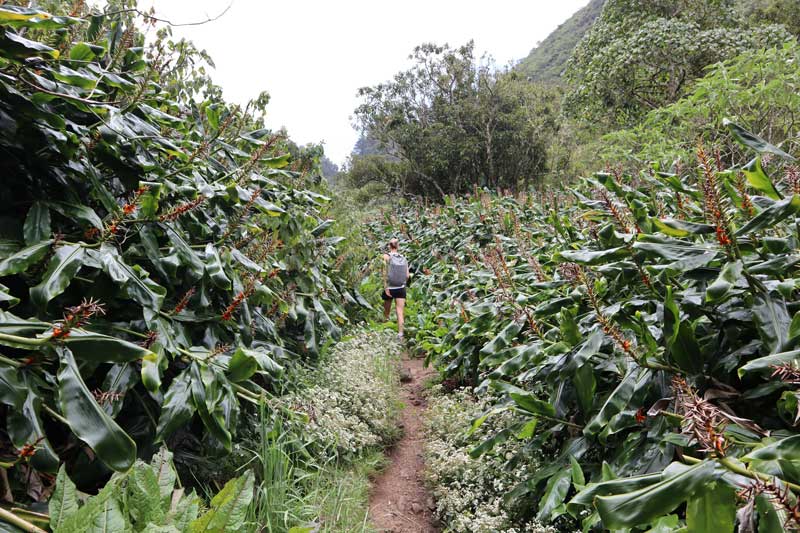
Logistics: distance – 5.2km (loop) | time: 3.5hrs | difficulty – medium (though listed as easy). Bring – snacks/picnic lunch, water, something warm for the forest, and a change of clothes for the finish.
Afternoon at the Beach
No matter which option was chosen, you certainly deserve one last afternoon at the beach, seeing as tomorrow we bid farewell to this part of the island. Head back to Plage de la Salines or try a new spot at Plage de Boucan Canot. This is one of the island’s most famous beaches, a Reunionnaise version of Saint-Tropez. Boucan Canot boasts a wide stretch of sand and a few pockets of charm, but the nearby resorts and concrete promenade lined with cafes and restaurants were a turnoff for us.
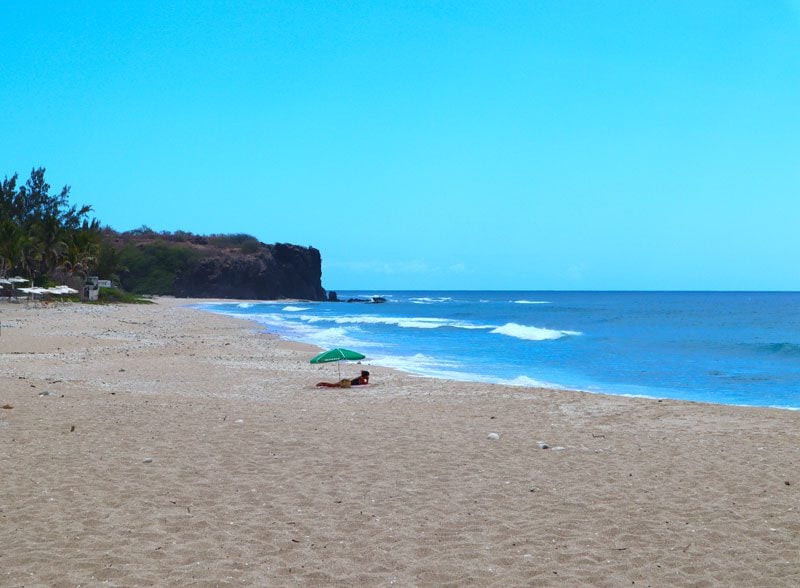
Sunset in Etang-Sale les Bains
The village of Etang-Sale les Bains is located outside the lagoon’s perimeter, so it doesn’t get as many tourists compared to the towns further up the coast. However, it’s a lovely seaside town that’s quite popular with the locals. Its black sand beach is so beautiful that perhaps even UFOs visited it in 2019. The black sand beach is one of the best places in Reunion Island to watch the sunset, so bring a few bottles of Bourbon beer and find your spot on the beach.
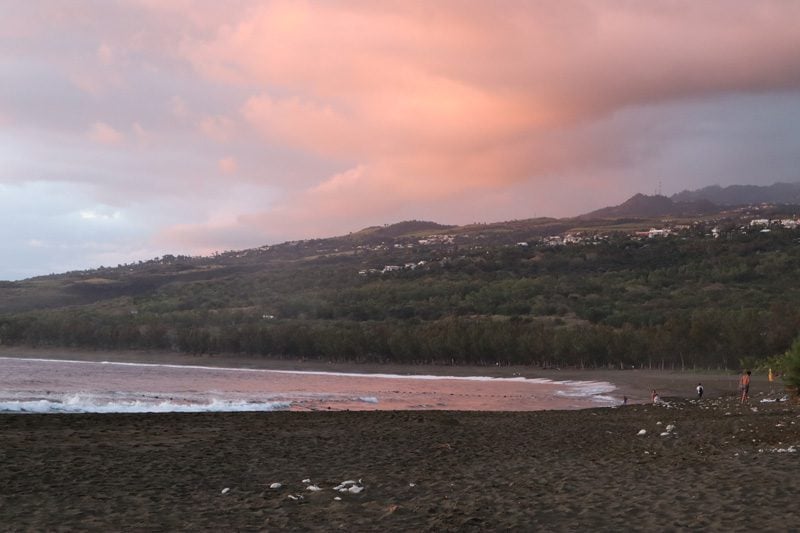
Dinner at Planch’Alize
To celebrate the end of the first leg of the trip, head to Planch’Alize in la Saline-les-Bains for a gourmet dinner. It’s one of the more upscale restaurants on the coast, so reservations are required (ask for a table closest to the beach). If you simply fancy a drink on the beach, walk-in visits are OK. The cuisine is local but with a French twist. We had some tuna tartare as a starter, followed by tuna steak and grilled fish for mains. Other solid options nearby include Le Choka Bleu and Thai Run.
